AVEVA ICT Leadership Awards –KSA 2024 winners
Humanising AI REVEALED:


AVEVA ICT Leadership Awards –KSA 2024 winners
Humanising AI REVEALED:

e&’s Ali Al Mansoori on empowering people and driving a culture of innovation

















www.cxoinsightme.com
24 CROWNING THE KINGDOM’S PIONEERS
Winners revealed: ICT Leadership Awards –KSA 2024
15 TAILORED FOR TALENT
Zurich Middle East’s Anuja Shah on how personalised employee benefits are reshaping workplaces
36 CODE TO SUCCESS
Liferay’s Moussalam Dalati discusses how low-code development and data are reshaping digital experiences
40 REDEFINING BUSINESS INTELLIGENCE
MicroStrategy’s Saurabh Abhayankar highlights the impact of GenAI on analytics and business insights
e&’s Ali Al Mansoori spotlights the company’s human-centric philosophy and commitment to innovation
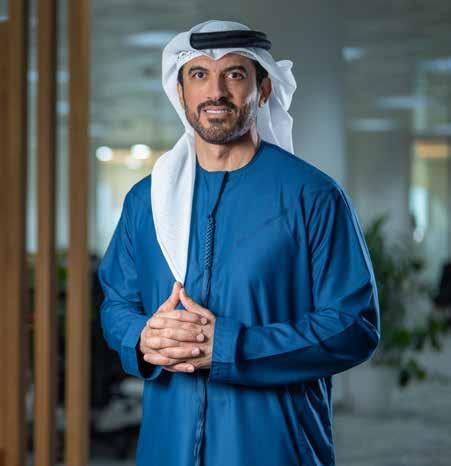
32 AI ROADMAPS IN 2025
SandboxAQ shares key trends that will shape the future of AI in the Middle East
44 REDEFINING OWNERSHIPS
ManageEngine on navigating the challenges of digital identity
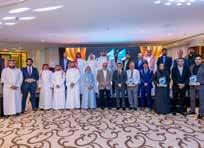
48 The latest gears and gadgets to keep you ahead of the curve
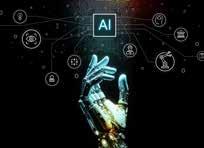




Published by

As we wrap up 2024, it’s impossible not to reflect on the incredible strides the tech industry has made this year. From groundbreaking advancements in space exploration to the resurgence of cryptocurrency as a transformative force in finance, and the continued evolution of connectivity with the expansion of 5G and the emergence of 6G networks, this year has truly been eventful.
But if there’s one narrative that defined the year, it’s artificial intelligence (AI). A recent McKinsey report revealed that global investments in AI hit $500 billion this year—a testament to its growing importance. We saw AI become smarter, more accessible, and more deeply integrated into our daily lives.
Still, as we’ve explored throughout the year—and as this month’s issue reaffirms—the human element remains irreplaceable. AI may be a powerful tool, a brilliant enabler, and a game-changing partner, but it’s people who remain at the core of transformation. This sentiment resonates in our cover story, where Ali Al Mansoori, Group Chief People Officer at e&, highlights that while technology drives innovation, it is the people behind it who fuel an organisation’s success. For e&, empowering its workforce remains as vital as its groundbreaking achievements in connectivity and digitalisation.
This perspective is echoed by Anuj Shah, CIO of Zurich Middle East, and Saurabh Abhayankar, CPO of MicroStrategy, who affirm that while technology reshapes industries, it is the human resource that will always be the most critical asset. This month’s insights from AVEVA further this dialogue, emphasising that AI should complement human intellect, not replace it.
In this issue, we also explore how TeamViewer is redefining remote work, ManageEngine is streamlining IT operations, and Liferay is transforming digital experiences.
Looking ahead to 2025, the road is brimming with opportunities to continue to push boundaries with tech. The only question is—are you ready to see what’s next?
Adelle Geronimo
Managing Editor
@Copyright 2024 Insight
Managing Editor
Adelle Geronimo
adelleg@insightmediame.com
+97156 - 4847568
Production Head
James Tharian
jamest@insightmediame.com
+97156 - 4945966
Commercial Director
Merle Carrasco
merlec@insightmediame.com
+97155 - 1181730
Administration Manager
Fahida Afaf Bangod fahidaa@insightmediame.com
+97156 - 5741456
Operations Director
Rajeesh Nair
rajeeshm@insightmediame.com
+97155 - 9383094
Designer Anup Sathyan
While the publisher has made all efforts to ensure the accuracy of information in this magazine, they will not be held responsible for any errors

Meta, the parent company of Facebook, Instagram, and WhatsApp, is reportedly preparing to invest over $10 billion in its first privately-owned subsea cable network. Spanning more than 40,000 kilometres, the project aims to enhance Meta’s control over its global
internet traffic, reduce dependence on telecommunications providers, and mitigate geopolitical risks.
The planned network will take a unique “W” shaped route, connecting the US East Coast to India via South Africa, then continuing from India to the US West Coast through Australia. This ambitious design reflects Meta’s focus on securing its infrastructure amidst rising global tensions and
concerns over the vulnerabilities of existing undersea cables.
As one of the largest infrastructure initiatives in the tech industry, the project highlights Meta’s commitment to supporting its platforms, which account for a significant portion of global internet traffic. However, challenges such as limited access to cable-laying ships and resources could extend the project timeline, requiring a phased approach to construction.
40,000km+
Once completed, the cable will allow Meta to manage its data traffic independently, reduce reliance on shared networks, and unlock opportunities for improved connectivity in underserved regions. The official announcement detailing the project’s scope and objectives is expected in early 2025.
du has partnered with Ericsson to enhance its 5G network capabilities across the UAE. This agreement will utilise Ericsson’s cutting-edge Radio Access Network (RAN) solutions, boosting network capacity and delivering a seamless experience for Mobile Broadband (MBB) and Fixed Wireless Access (FWA) customers.
The expansion aims to prepare du’s network for nextgeneration services, including augmented reality (AR), virtual reality (VR), and cloud gaming, while also paving the way for 5G Advanced technologies.
Fahad Al Hassawi, Chief Executive Officer, du, said, “Our latest agreement with Ericsson marks a significant step in expanding our 5G network and reinforcing our commitment to providing cutting-edge experiences for our customers. The increased network capacity will not only improve the Fixed Wireless Access segment but also position us for the future of digital services in areas like augmented reality, virtual reality, and cloud gaming.”
Nicolas Blixell, Vice President and Head of Ericsson Gulf Council Countries at Ericsson Middle East and Africa, said, “This agreement is a testament to Ericsson’s commitment to driving 5G innovation in the region. By expanding du’s 5G network capacity, we are enabling faster, more reliable connectivity, which is essential for delivering next-generation 5G services. With the increasing demand for high-performing networks, our
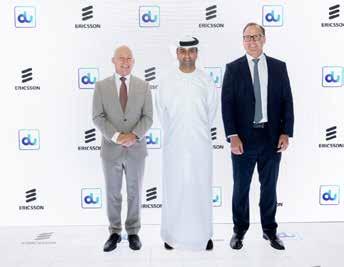
collaboration with du will help meet the evolving needs of consumers and businesses in the UAE.”
Ericsson’s lightweight radios, which consolidate multiple sectors and frequency bands, will play a key role, reducing tower space requirements and cutting energy consumption by up to 40 percent. This initiative further cements Ericsson’s role as a trusted partner in the UAE’s telecom evolution.

IT spending across the Middle East and North Africa (MENA) region is forecast to reach $230.7 billion in 2025, a 7.4 percent increase compared to 2024, according to the latest insights from Gartner. The rise is being driven by
governmental and private sector efforts to position the region as a global leader in AI innovation, supported by advanced cybersecurity measures and scalable cloud infrastructure.
Mim Burt, Managing VP
The General Authority of Customs (GAC) has unveiled the “Huqoq” platform, a cutting-edge system designed to automate legal processes for the Authority, its employees, and customs clearing brokers. The platform was launched by GAC Chairman HE Ahmed bin Abdullah Al Jamal as part of the Authority’s modernisation efforts aimed at streamlining and improving administrative operations across all customs sectors.
HE Al Jamal described “Huqoq” as a groundbreaking step toward full automation and precise documentation of legal procedures. He emphasised that the platform revolutionises how internal investigations are conducted, ensuring justice, equality, and the protection of employees’ rights. “This strengthens trust within the Authority and among its employees,” he added.
Abdulaziz Tarad Al Hedhal, Director of the Legal Affairs Department at GAC, highlighted that “Huqoq” is Qatar’s first legal platform of its kind. He stated that it represents a complete digital transformation of legal operations, including investigations, grievances, and administrative violation reviews.
Analyst, Gartner, said, “Local organisations are ramping up investments in research and development to create new business models, enhance customer experiences, and build a skilled workforce for global competitiveness, thereby boosting IT spending in the region.”
The fastest-growing IT segment will be data centre systems, which are expected to see a 14.9 percent increase
in spending in 2025. This growth is attributed to the widespread adoption of AI and cloud services, alongside a rising demand for data storage and processing. Additionally, major hyperscalers in the region are expanding sustainable, AIdriven cloud infrastructure to meet growing demands.
Generative AI (GenAI) is another key area of focus, with software spending predicted to grow 13.7 percent in 2025. According to Eyad Tachwali, Senior Director Advisory, Gartner, CIOs are moving beyond pilot projects, applying lessons learned to create more strategic, business-aligned use cases.
“To address these barriers, CIOs will need to take a portfolio approach to their use cases aligned with business priorities and invest in data and AI literacy that focus on the ‘doing’ as much as the ‘knowing’ to derive value from their GenAI investments.”
Key features of “Huqoq” include AI-powered recommendations for penalties, electronic notifications to employees, self-service grievance submissions, and online fine payments for customs brokers. The platform reflects GAC’s commitment to innovation, transparency, and efficiency, enhancing both employee and operational satisfaction.

OpenAI has introduced a new search feature to its ChatGPT platform, integrating web browsing capabilities directly into the chatbot. This update positions OpenAI as a challenger to established players like Google and Microsoft’s Bing, as well as newer entrants like Perplexity, an AI-driven search tool backed by Jeff Besos and Nvidia.
The new feature allows ChatGPT to retrieve real-time information from the web, offering users up-to-date answers with links to relevant sources. OpenAI explained that the tool utilises thirdparty search providers and advanced AI models to provide accurate and
$6.6 billion
The amount of funding OpenAI raised from investors in October 2024
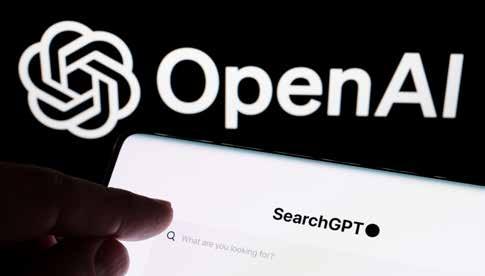
timely responses. The feature, built on a fine-tuned version of GPT-4, is rolling out to ChatGPT Plus and Team users starting Thursday, with plans to extend it to free users in the coming months. This development marks another significant step for OpenAI as it
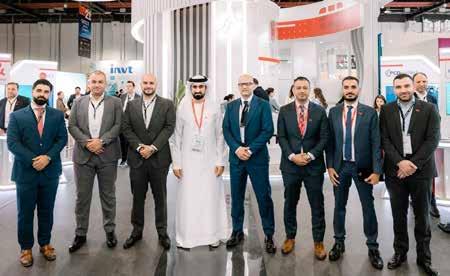
Fortinet has expanded its partnership with e& UAE, the telecom arm of e&, to introduce a managed Secure SDWAN service. This collaboration marks a significant step in enabling secure networking solutions to drive digital transformation across the UAE.
Since 2015, e& UAE and Fortinet have worked together to deliver cutting-edge security solutions to key sectors such as government, healthcare, education, and oil and gas. In recognition of its efforts, e& UAE was named Fortinet’s Secure Connectivity Partner of the Year in 2023.
expands ChatGPT’s capabilities beyond conversational AI. The Sam Altman-led company has raised $6.6 billion in funding this year, valuing it at $157 billion, as it continues to solidify its place at the forefront of artificial intelligence innovation.
The new Managed Secure SDWAN service will enhance e& UAE’s existing Managed Firewall offering. It promises to boost operational efficiency, strengthen security, and provide scalable network infrastructure for organisations of all sizes. Fortinet’s SD-WAN technology also improves application performance and user experience while delivering the cost benefits of hybrid networks.
Alain Penel, Vice President for the Middle East, Turkey, and CIS at Fortinet, said, “Fortinet Secure SDWAN improves network performance, reliability, and security, facilitating smoother communication and collaboration.”
Hamad Mohamed Almarzooqi, Senior Vice President at e& UAE, said, “Our strategic alignment with Fortinet supports our goal of providing the UAE market with leading SD-WAN solutions.”
This partnership sets the stage for advancements in SD-WAN, SASE, and SD-Branch deployments in the future.


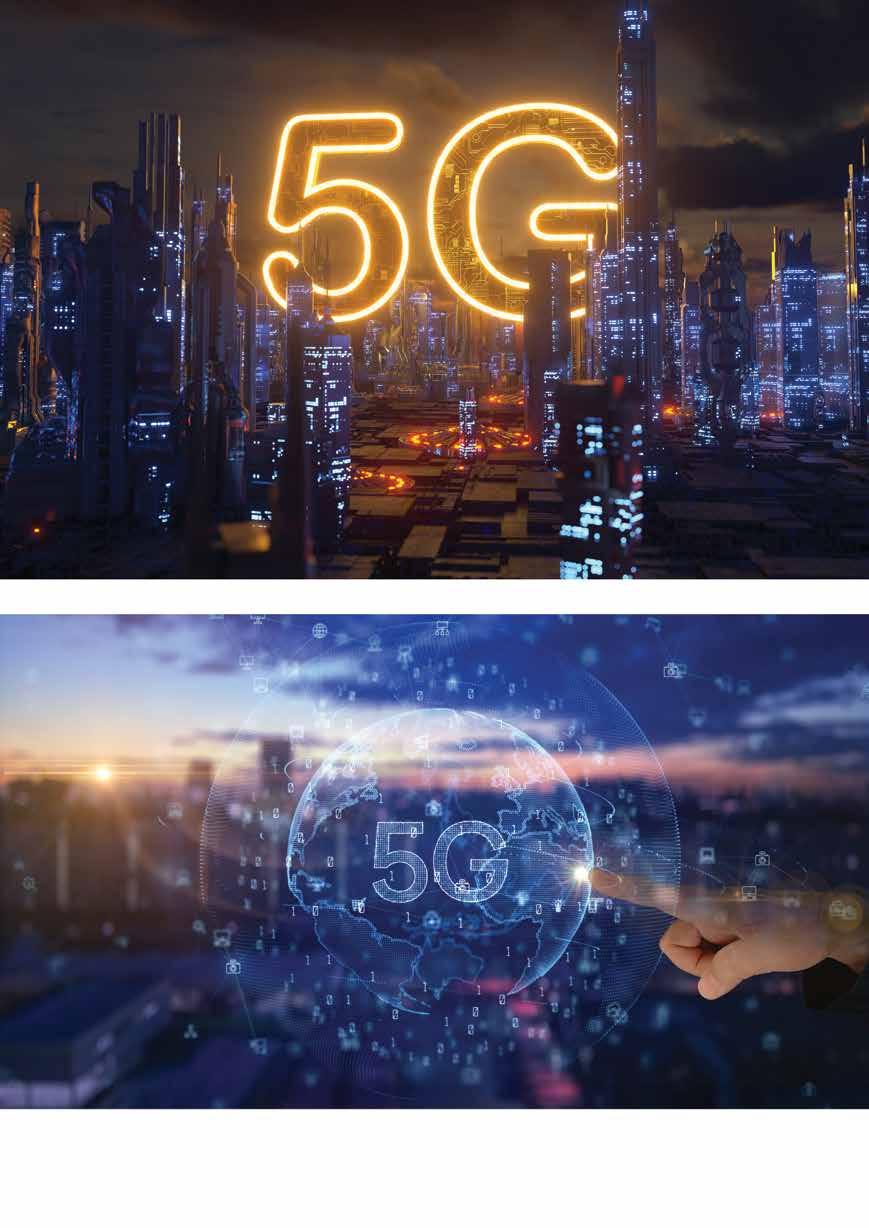







February 2025
Dubai, UAE
Celebrating excellence in leadership, strategy, and innovation, the CXO 50 Awards 2025 will honour the visionaries driving transformative change in the digital era
The CXO 50 Awards is back, shining a spotlight on IT and business leaders from across the Middle East who are transforming industries, driving innovation, and shaping the future.
Now in its seventh year, this prestigious event recognizes extraordinary individuals who have redefined leadership in the digital age. From leveraging cutting-edge technologies to driving measurable business success, the CXO 50 Awards celebrates those who have mastered the art of turning challenges into opportunities.
Are you one of the visionaries leading the charge? Or do you know someone whose leadership has made a profound impact? If so, it’s time to step into the spotlight. Nominate yourself or someone you admire for this year’s CXO 50 Awards and join the ranks of the region’s most influential leaders.
This year’s winners will be announced at a grand gala event in Dubai, UAE, where top executives will gather to celebrate leadership, excellence, and innovation.
1. Visit the website: Head over to the official nomination page at: https://cxoinsightme.com/cxo50/2025/
2. Click ‘Nominate Now’: Access the submission portal to begin.
3. Fill out the nomination form: Provide detailed information, including notable achievements, contributions, and measurable impacts within the ICT landscape.
4. Submit your nomination: That’s it! Sit tight and wait for the winners to be revealed.
Don’t miss your chance to be part of this inspiring celebration of leadership. Submit your nomination today!

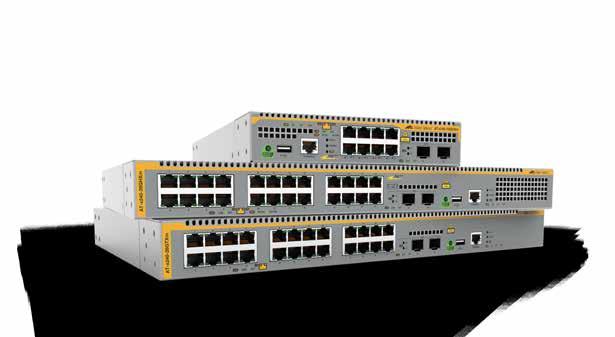
From secure connectivity to seamless performance, our switches and networking solutions are built to keep you ahead in an ever-evolving digital landscape. Trusted by clients and partners worldwide, we deliver the value and reliability you need.
The x240 Series allow you to build a high-performing network access solution with multi-gigabit speeds of 10M/100M/1/2.5/5G on all edge ports to connect any device, old or new.
Power high-end devices with up to 90W power delivery
Enjoy high-speed Wi-Fi through existing cabling
Leading the way in network solutions since 1987
For more information, please contact one of our
Saed Habash, Channel Director Middle East & Africa, TeamViewer, shares insights on the adoption of remote access technology and how the company is addressing challenges like cybersecurity and workforce digitalisation
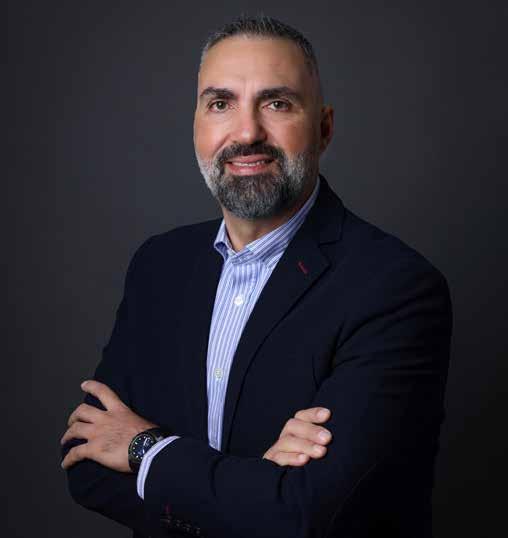
The rise of digitalisation and the widespread adoption of remote work are redefining how industries operate, shifting from traditional models to more agile, technology-driven approaches. For businesses, these trends are no longer optional—they are essential for maintaining a competitive edge. Nowhere is this transformation more apparent than in the Middle East, where ambitious initiatives like Saudi Arabia’s Vision 2030 and the UAE’s Centennial 2071 are creating fertile
ground for the adoption of advanced technologies. The region’s emphasis on innovation, coupled with its strategic focus on diversifying economies, makes it uniquely positioned to capitalise on solutions such as remote connectivity, artificial intelligence (AI), and augmented reality (AR). As industries like oil & gas, manufacturing, healthcare, and logistics adapt to this new reality, the Middle East is emerging as a hotspot for companies driving digital transformation—and TeamViewer is one of the key players enabling this shift.
The need for robust remote access solutions has grown exponentially in the region, fuelled by the drive for operational efficiency, cost reduction, and enhanced flexibility. According to Saed Habash, Channel Director Middle East & Africa, TeamViewer, this shift is being embraced across industries, from oil & gas to healthcare.
“Remote access technology in the Middle East is evolving rapidly, driven by digital transformation initiatives across key sectors,” he explains.
“In oil & gas, for instance, remote access is crucial for monitoring and troubleshooting equipment in remote locations, which helps minimise downtime and reduce costs. Healthcare organisations are using remote access for telemedicine, remote diagnostics, and managing medical devices. Similarly, in manufacturing and logistics, companies are relying on these tools for maintenance, troubleshooting, and optimising supply chain operations.”
What’s driving this shift, Habash notes, isn’t just the immediate need to ensure business continuity in unpredictable times. It’s also about reshaping how businesses operate, with remote access becoming a longterm strategic enabler for growth and efficiency.
As hybrid work models gain ground in the Middle East, cybersecurity has become a critical concern for businesses transitioning to more flexible environments. Ensuring that remote sessions are secure and reliable is one of TeamViewer’s top priorities.
“Cybersecurity remains a top priority, especially as hybrid work environments continue to grow,” Habash emphasises.
“At TeamViewer, we take a multi-layered approach to security, incorporating end-to-end encryption, two-factor
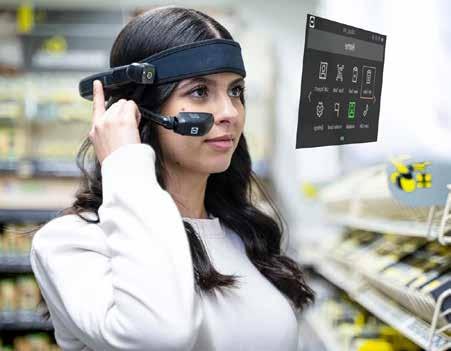
authentication, and compliance with global data protection regulations such as GDPR and SOC 2. We ensure our solutions are designed to offer secure, encrypted connections for every remote session, whether employees are working from the office, home, or a remote site.”
Proactive threat monitoring and regular updates are at the core of TeamViewer’s approach to staying ahead of emerging cybersecurity risks. For companies navigating hybrid work environments, this focus on security provides peace of mind while enabling them to embrace the flexibility of remote work.
In industries where operational downtime can result in significant losses, AI is becoming a gamechanger. TeamViewer has integrated AI into its solutions to optimise remote support and maintenance processes, making them faster, smarter, and more proactive.
“A key part of our AI integration is predictive maintenance tools, which analyse real-time data to identify potential equipment failures before they happen,” Habash shares. “This allows companies to take proactive measures, reducing downtime and preventing costly repairs. Our AIenhanced remote support features also help technicians by automating
routine diagnostics and offering actionable insights, enabling them to resolve issues faster and with greater accuracy.”
What sets TeamViewer apart in this space is its emphasis on collaboration between human expertise and AI. “Rather than replacing human expertise, our AI solutions are designed to work alongside technicians, offering data-driven insights and automating repetitive tasks to speed up issue resolution. This collaboration between human expertise and AI leads to better outcomes.”
For industries like oil & gas, logistics, and manufacturing, where workers often operate in remote or high-risk environments, augmented reality is transforming how tasks are performed. TeamViewer’s AR platform, Frontline, is empowering frontline workers by giving them real-time, handsfree guidance, reducing errors, and boosting efficiency.
“TeamViewer Frontline provides step-by-step visual instructions directly on mobile devices or smart glasses, helping workers complete complex tasks more efficiently,” Habash explains. “For example, a worker in a manufacturing facility can use AR to view overlay instructions on a piece of equipment while performing maintenance. They can also receive real-time remote assistance from experts, reducing the likelihood of
errors and minimising the need for onsite experts, which can be costly and time-consuming.”
The ability to overlay visual instructions and troubleshoot in realtime not only improves operational efficiency but also ensures worker safety. “AR guides workers through potentially hazardous tasks, ensuring they follow best practices,” Habash adds.
While the potential of remote access, AI, and AR is vast, adopting these technologies isn’t always seamless— particularly for frontline workers who may not have advanced technical expertise. Habash acknowledges these challenges and explains how TeamViewer is ensuring smooth adoption.
“Frontline workers often have limited technical expertise, so digital solutions must be intuitive, easy to use, and seamlessly integrate into their daily workflows,” he says. “TeamViewer Frontline is designed to be simple to use, providing clear, step-by-step instructions and visual aids so workers can get up and running quickly.” He also highlights the importance of reliability in challenging environments. “We ensure that our solutions work even in environments with limited or unreliable internet connectivity, such as remote oil & gas sites or rural logistics hubs. Flexibility and customisation are key—we work closely with our customers to tailor our solutions to their specific needs.”
As the Middle East continues its transformation into a hub of innovation and technology, the role of advanced solutions like remote access, AI, and AR will only grow. TeamViewer’s commitment to enabling businesses to operate more efficiently, safely, and sustainably positions it as a key player in the region’s digital transformation journey.
“Ultimately, our goal is to help organisations unlock their full potential,” Habash concludes. “Whether it’s through AI-powered predictive maintenance, secure remote access, or AR-driven frontline solutions, we’re here to support businesses in the Middle East as they shape a connected and innovative future.”




Anuja Shah, CIO, Zurich Middle East, explains how personalised employee benefits are reshaping workplaces and driving loyalty across the GCC

Employee benefits are no longer a luxury; they are now a decisive factor in attracting and retaining top talent, especially in the competitive GCC market. Yet, as the Future of Work 2024 report commissioned by Zurich International Life reveals, a significant gap persists between what employees expect and what employers provide.
With 68 percent of UAE employees actively seeking new opportunities, many cite inadequate benefits as a key driver of dissatisfaction. Anuja Shah, Chief Information Officer at Zurich Middle East, highlights that the solution lies in creating personalised, employee-centric benefits, powered by technology and a deeper
understanding of workforce needs.
Shah sees the transformation of employee benefits as a necessary evolution, not just for retention but for fostering a loyal, engaged, and futureready workforce.
“Traditional employee benefits packages are no longer fit for purpose,” Shah states. “The workforce is diversifying, and employees want more thoughtful benefits that reflect their individual needs. Employers must proactively engage with their teams to co-create solutions that ensure longterm satisfaction and loyalty.”
The Future of Work 2024 report revealed stark statistics that underscore the urgency of this shift. Over 60 percent of employees across the
GCC demand customised benefits packages, and an overwhelming 95 percent believe that the traditional, one-size-fits-all model is outdated.
“Flexibility is key,” Shah adds. “Whether it’s education allowances, retirement plans, or tailored wellness programme, benefits need to align with employees’ unique circumstances.”
The value of technology Technology remains an essential tool in addressing this growing personalisation gap, according to Shah. At Zurich, the focus is on leveraging AI and data-driven tools to enhance employee experiences, empower career growth, and ultimately foster loyalty.
The human element is irreplaceable. AI is an enabler, complementing human efforts
“One of our most exciting initiatives is ‘Zurich Chat,’ a secure, AI-powered tool hosted on Azure,” Shah explains. “It helps employees with everything from summarisation to translation, allowing them to work more efficiently without compromising sensitive information. It’s about empowering employees to do their best work while also safeguarding their experience.”
Technology’s role doesn’t stop there. Zurich has nearly 200 AI-driven use cases spanning customers, partners, and employees, all designed to improve decision-making and engagement. When it comes to employee benefits, this data-centric approach has been instrumental in identifying gaps and tailoring solutions to individual needs.
Shah highlights how AI-powered analytics can drive personalised benefits: “Think about how streaming platforms like Netflix recommend shows based on your preferences. We can use similar AI-driven tools to personalise benefits packages for employees. For instance, a young professional might prioritise workplace savings plans, while a parent might need child education allowances. Technology allows us to offer the right benefit at the right time.”
60%
The proportion of GCC employees looking for customised benefits
Source:FutureofWork2024report

While Shah is a firm believer in the potential of AI, she remains adamant about maintaining the human touch in decision-making processes, particularly in talent and human resource management.
“The human element is irreplaceable,” she says. “AI is an enabler, complementing human efforts. For example, while AI can process thousands of job applications efficiently, human oversight ensures fairness and equity, addressing any biases in the system.”
At Zurich, the balance between technology and empathy is a priority. Shah describes how the company uses AI to engage with employees, understand their career aspirations, and identify skills gaps. However, she notes that these insights are only meaningful when combined with human guidance.
“It’s about creating a healthy mix of technology and human interaction,” she explains. “We offer access to curated courses and training programs to help employees on their development journey.”
The disconnect between employee expectations and existing benefits is particularly pronounced among younger employees. In the UAE, over half of those aged 18-24 are open to leaving their current jobs for better opportunities, such as career development programs or workplace savings plans.
Shah views this as both a challenge and an opportunity. “Young
talent is incredibly driven, but they are also quick to look elsewhere if their needs aren’t met,” she says. “They want more than just a paycheck—they want benefits that align with their career aspirations and financial goals.”
Shah cites examples such as flexible education allowances and customised retirement savings plans as ways to make personalisation more impactful. “Technology can play a critical role in personalisation,” she says. “In e-commerce, for instance, recommendations are tailored based on user behaviour. Employee benefits could adopt a similar approach.”
The Zurich CIO also points out the growing importance of financial planning in the UAE, particularly among the local population, as an area ripe for innovation. Shah believes organisations need to focus on more than just immediate benefits. “It’s about combining short-term solutions, like savings plans or insurance, with longterm growth opportunities,” she says. “Upskilling and career development initiatives are just as critical to retaining younger employees as customised benefits.”
Looking ahead, Shah emphasises that the solution lies in a combination of customisation, technology, and human insight. “The future of work is about personalisation,” she says. “When employees feel that their needs are heard and addressed, it builds trust, loyalty, and engagement. And that’s what every employer should strive for.”











Ali Al Mansoori, Group Chief People Officer at e&, highlights how the company’s human-centric philosophy and commitment to innovation are propelling its success as a global technology leader



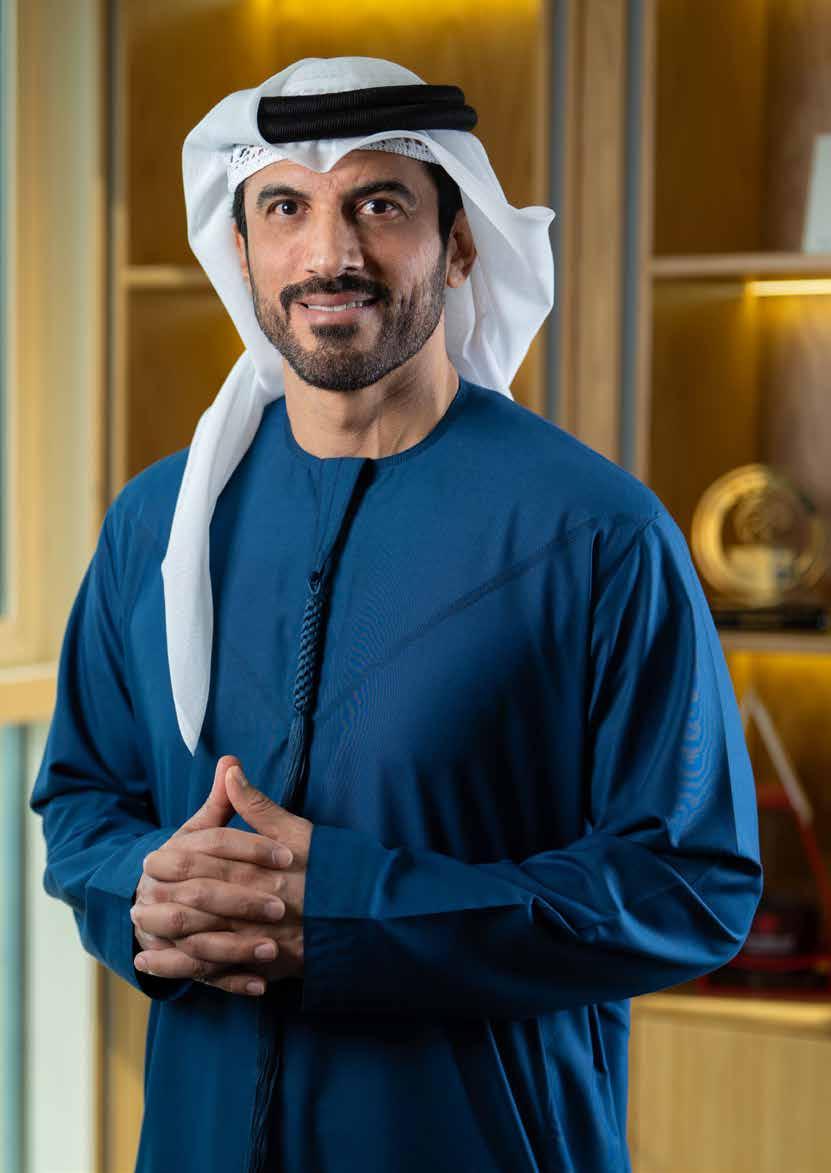
Technology is undeniably one of the most essential success drivers for any organisation. It has become the backbone of business transformation, redefining how we live and work, and creating opportunities that seemed impossible just a decade ago.
For e&, the UAE-born global technology giant, technology is only part of the story. While pushing the boundaries of connectivity, digitalisation, and innovation remain central to its mission, there is something even more critical to its success: its people.
At the centre of e&’s continuous growth and evolution from a regional telecommunications provider to a global technology powerhouse is a deep commitment to its workforce.
Ali Al Mansoori, the company’s Group Chief People Officer, knows this better than anyone. Under his leadership, e& has embraced a people-first philosophy, ensuring that the success of the company goes beyond cuttingedge AI programmes, record-breaking connectivity speeds, or groundbreaking digital solutions. It’s defined by the collective passion, talent, and drive of the people behind it.
“Our success is fuelled by our people,” he says. “They’ve created an environment that not only delivers excellence but also attracts global recognition.”
This people-first approach has earned e& accolades such as the Top Global Telecom Employer of 2024 by Brand Finance and a certification as a ‘Great Place to Work.’ However, for Al Mansoori, e&’s commitment to its employees goes far beyond accolades.
“We recognise and celebrate the diversity within our workforce and stakeholders, fostering a culture where every individual feels valued, included, and heard,” he says.
Al Mansoori further highlights that e&’s people-first ethos has been the driving force behind every decision he has made as Group Chief People Officer. It is embedded in the company’s growth strategies and initiatives, ensuring that the organisation’s innovation and ambition are rooted in a culture that empowers its people at every level.
This commitment comes to life through a range of transformative initiatives designed to equip employees with the skills and mindset needed to thrive. Leadership programmes like ‘License to Lead’, ‘GOLD’ (Group Organisation Development Programme) and Riyada (e& Talent Development Programme), developed in partnership with INSEAD, Bizgroup, Harvard, Ericsson and other international entities , prepare leaders to navigate the complexities of a rapidly evolving business landscape. Meanwhile, initiatives like ‘Bidayati’ focus on nurturing young talent, ensuring that the next generation of leaders is

equipped not only with the necessary tools but also the confidence and vision to shape the future.
At a time when artificial intelligence, automation, and digital transformation dominate every facet of business, e& has embraced a thoughtful, humancentric approach to progress. While driving advancements in cuttingedge technologies and solutions, the company is equally focused on empowering its people, ensuring they grow and thrive in step with the rapidly changing landscape.
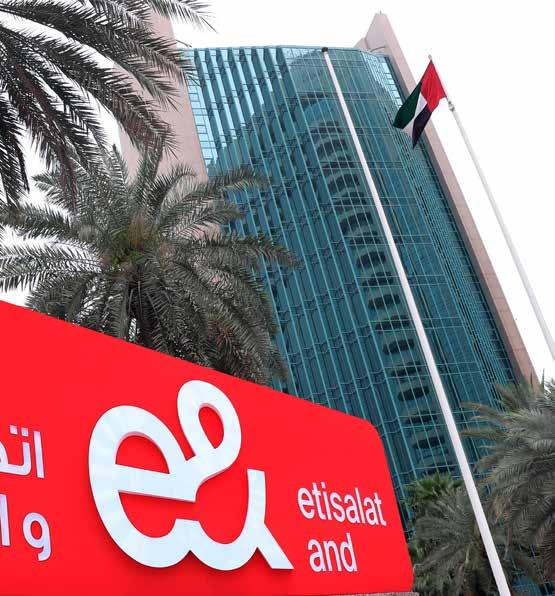
Our global brand positioning, ‘Go For More,’ is the culmination of our journey toward becoming a global technology powerhouse
“We are equipping our employees with the skills of tomorrow by fostering a culture of continuous learning,” says Al Mansoori. “At the same time, we’re adopting a thoughtful, human-centric approach to AI and automation.”
“Internally, we are empowering our employees with a clear understanding of ethical AI use,” explains Al Mansoori. “This ensures they don’t just adapt to technological advancements—they actively contribute to shaping them in ways that align with our values.”
The result is a workforce that is not only prepared for the challenges of tomorrow but also inspired to lead the charge. To further enable its people, e& has implemented a comprehensive learning and development strategy designed to support employees at every stage of their professional journey.
Through tailored programmes for new joiners, fresh graduates, leaders, and people managers, e& ensures its workforce remains adaptable and forward-thinking.
“A key example of this is our company-wide learning platform, IQRA, which offers opportunities for upskilling and reskilling for employees across the business,” explains Al Mansoori. “To complement this, we’ve established a coaching hub led by certified coaches, offering personalised growth and development opportunities. These initiatives ensure our workforce is empowered with the skills and knowledge needed to excel in a dynamic workplace.”
When it comes to empowering future talents, Al Mansoori highlights how initiatives like the AI Graduate Programme support Emiratisation while contributing to the UAE’s broader development goals. Now in its sixth batch, the programme equips Emirati graduates with advanced skills in artificial intelligence, machine learning, big data, and cybersecurity, while simultaneously fostering leadership development.
“We’re deeply invested in empowering Emirati professionals and supporting the UAE’s national ambitions,” says Al Mansoori. “Through initiatives like the AI Graduate Programme and partnerships with global technology players such as Amazon Web Services, we are building a talent ecosystem that is prepared for the challenges of tomorrow.”
Beyond innovation and continuous learning, Al Mansoori believes that a crucial element of a successful workplace is a culture that fosters trust, transparency, and inclusivity. At e&, this starts with open communication. Initiatives like Employee Voice Surveys and Townhall meetings provide employees with platforms to share their ideas, raise concerns, and shape the company’s policies.
“Building trust through open dialogue is essential for driving innovation, collaboration, and growth,” he explains. “Our townhall meetings, for example, are opportunities to

An ambitious organisation’s success lies in its ability to translate purpose into impactful action
e&’s focus on people and culture enables it to differentiate itself in the market through its ability to drive a cultural shift from the top down—a feat many companies struggle to achieve. “While we are not immune to siloes, we approach them headon by co-creating cultures with our employees. This collaborative approach helps bridge the gap between a stated culture and the actual, realised culture, setting us apart as a truly dynamic and adaptive organisation,” he says.
powerhouse. Driven by the purpose to enrich every moment, every day for everyone we reach, we’re embedding this promise into every aspect of our culture.”
As e& continues to expand into new international markets, one of Al Mansoori’s biggest challenges is scaling this culture across borders. His approach? Balancing global best practices with a deep respect for local nuances.
“In the regions where we operate, we’re dedicated to creating opportunities for talent development within those communities,” he says. “This ensures that our growth is both sustainable and inclusive.”
Ultimately, Al Mansoori’s leadership goes beyond achieving business goals. It’s about leaving a lasting legacy—one where people are empowered to grow, innovate, and thrive.
“My vision is to create a culture where our people feel deeply connected to the organisation, grow both personally and professionally, and carry our ethos of innovation into their communities,” he says.
address significant topics, celebrate milestones, and collectively shape our path forward.”
This culture of inclusivity extends beyond policies and programmes. With a workforce representing 90 nationalities, e& celebrates diversity as one of its greatest strengths. From increasing female representation in management to collaborating with organisations like Nokia and UN Women, e& is setting a powerful example for how companies can drive inclusivity in meaningful, actionable ways.
“Our focus is on creating a workplace that prioritises employee well-being and empowerment. We want everyone to feel valued, supported, and empowered to grow both personally and professionally,” says Al Mansoori.
Recently, e& has launched a new global brand positioning – ‘Go For More’ — a call to action that redefines the company’s ambitions and identity on the world stage.
Represented by the ‘&’ in its name, e&’s ecosystem seamlessly connects connectivity, mobility, entertainment, and digital solutions into a cohesive network designed to empower both businesses and customers alike.
“An ambitious organisation’s success lies in its ability to translate purpose into impactful action. While having a vision is essential, transforming that vision into a shared belief among employees forms the foundation of an organisation’s journey toward excellence,” says Al Mansoori.
He adds, “Our global brand positioning, ‘Go For More,’ is the culmination of our journey toward becoming a global technology
Building a workforce that is vital to building this legacy. “Through continuous upskilling and reskilling initiatives, I aim to nurture a workforce that is ready to embrace emerging technologies and innovative approaches. By embedding a culture of learning, experimentation, and collaboration, we ensure that our employees not only adapt to change but thrive in it, driving the evolution of e& and the industries we serve,” says Al Mansoori.
While technology will continue to shape the future, Al Mansoori firmly believes that it’s the people behind it who determine how far an organisation can go. “Ultimately, my journey at e& has shown me that disruption, while challenging, offers immense opportunity for those who approach it with agility and purpose. I want to be remembered for harnessing these opportunities to empower our people at scale, enriching their professional lives, and positioning e& as a leader in innovation and excellence in the global digital economy,” he says.
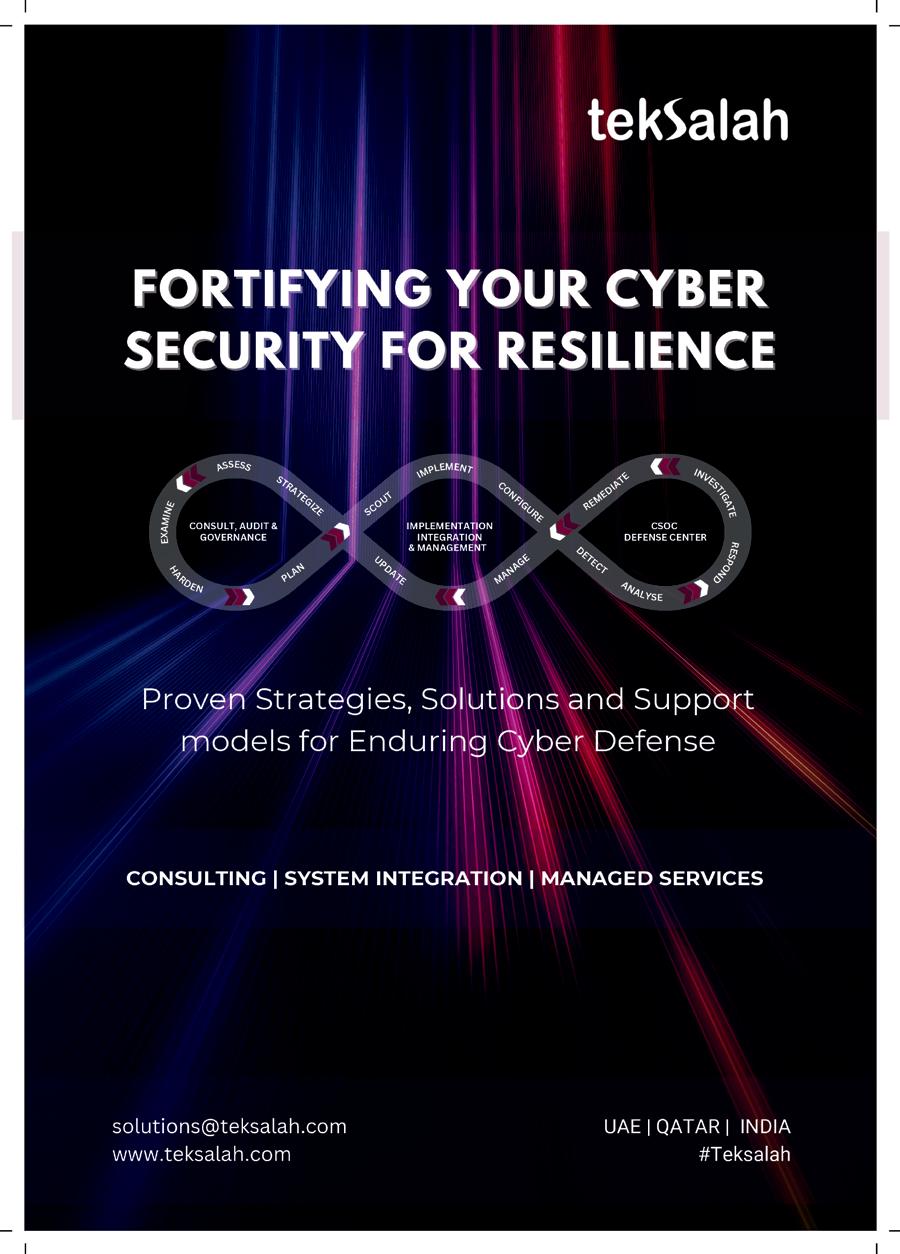
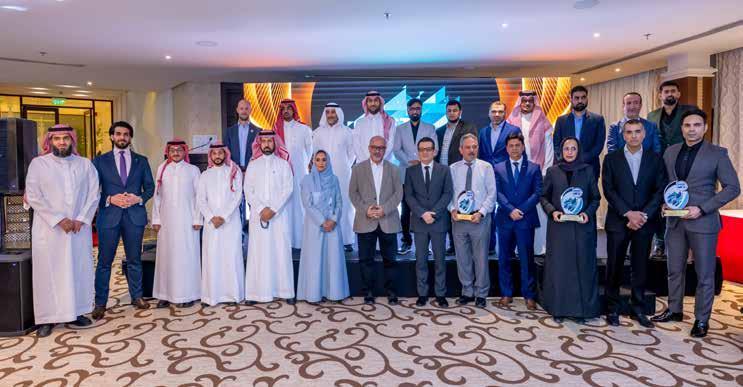
ICT Leadership Awards – KSA 2024 celebrates the leaders driving innovation and shaping the future of Saudi Arabia’s technology landscape
On 27th November, Insight Media and Publishing powered by CXO Insight ME hosted the prestigious ICT Leadership Awards – KSA, bringing together the Kingdom’s most influential ICT leaders, innovators, and changemakers. The event celebrated the remarkable strides Saudi Arabia is making in the technology sector, honouring those at the forefront of driving digital transformation and innovation. Against the backdrop of Saudi Arabia’s rapid technological evolution, the evening served as a testament to the nation’s growing influence as a global tech hub.
The ICT Leadership Awards – KSA spotlighted leaders who have made significant strides in advancing the Kingdom’s ICT capabilities. These changemakers aren’t just building the digital infrastructure of today but are laying the groundwork for a smarter, more connected tomorrow. Their contributions are pivotal in helping Saudi Arabia achieve its ambitious Vision 2030 goals, from smart cities to AI-driven public services.
Each honouree was a testament to the Kingdom’s growing prominence as a global tech hub. From driving digital innovation to enhancing cybersecurity resilience, these leaders are creating a ripple effect that’s inspiring change not only in Saudi Arabia but across the region.

The event also featured two thought-provoking presentations from key partners, who delved into the intersection of AI, cybersecurity, and digital transformation.
In the first keynote, Roland Daccache, Senior Manager of Sales Engineering at CrowdStrike, tackled the rapid advancements in AI and its dual impact—revolutionising how we work and communicate while also enabling cybercriminals to launch increasingly sophisticated attacks. His talk shed light on the critical need for proactive cybersecurity measures as AI becomes a battleground for defence and exploitation alike.
This theme was further explored by Ahmad Alhouf, Regional Sales Manager, and Omar Yousef, Sales Engineer at Vectra AI. Their session, “How AI is Transforming Cyber Defence in KSA,” highlighted how AI-powered tools are enabling smarter and faster detection of cyber threats. They emphasised that as Saudi Arabia’s digital economy grows, AI is crucial in countering the everevolving cyber threat landscape.
The evening culminated in the ICT Leadership Awards ceremony, where innovators and leaders were celebrated for their extraordinary contributions. The event wasn’t just about honouring achievements; it was a call to action to continue driving innovation, collaboration, and excellence in Saudi Arabia’s thriving ICT sector.

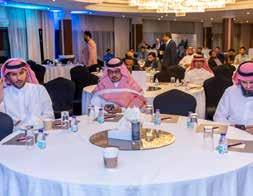
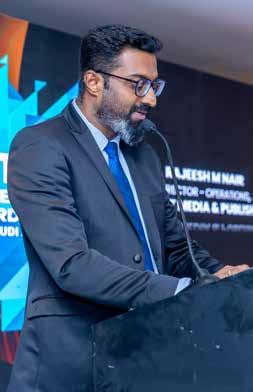
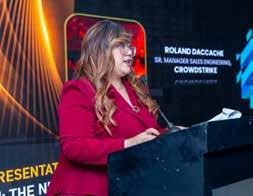
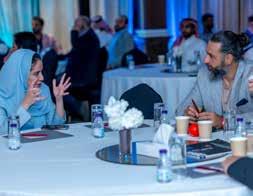

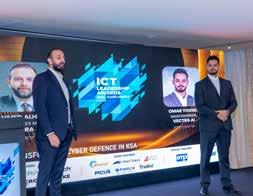
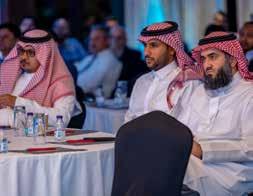
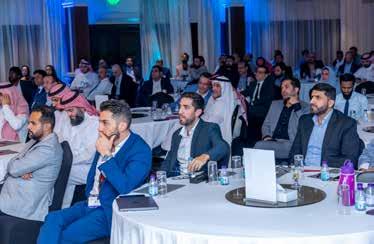
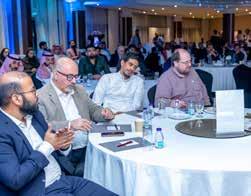
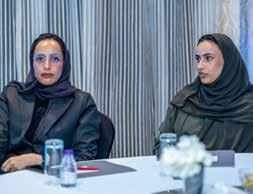
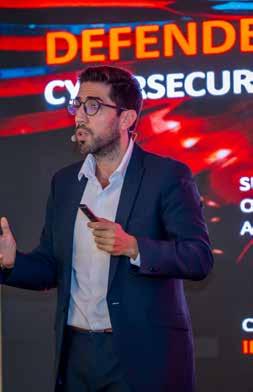
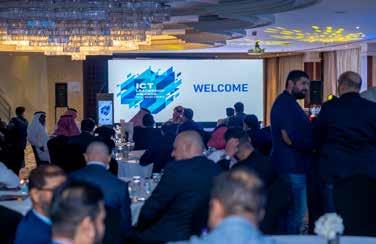

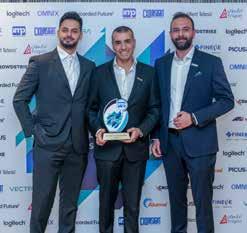
Vectra
Best AI-Driven Cybersecurity Vendor
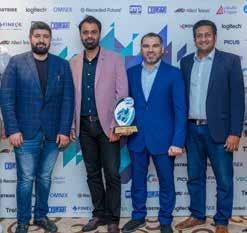
Samsung
Best Enteprise Mobility Solutions
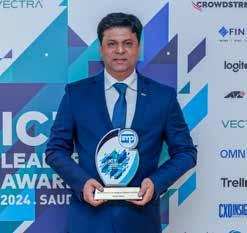
Allied Telesis
Best Network Automation Solutions Provider
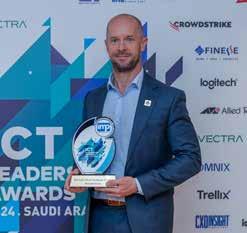
Recorded future Best Cyber Threat Intelligence Provider
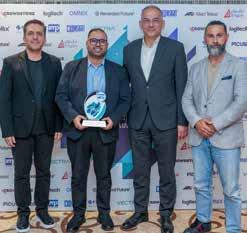
Akamai
Best Microsegmentation Solutions Provider
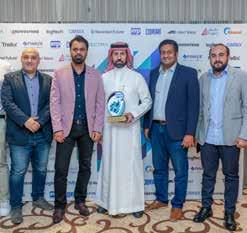
Alkhorayef Printing Solutions
Best Integrated Service Solutions Provider

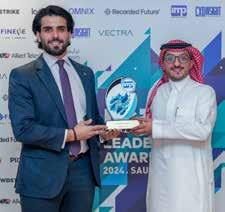
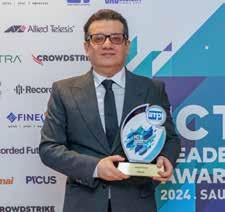
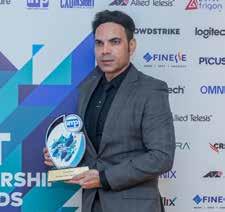
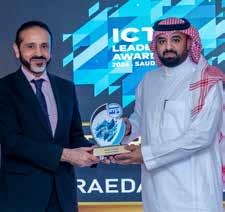
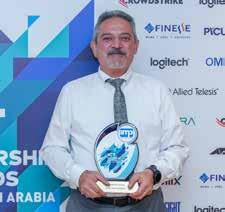
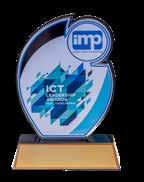
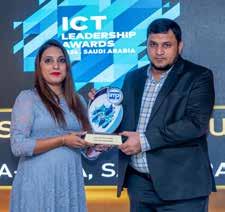

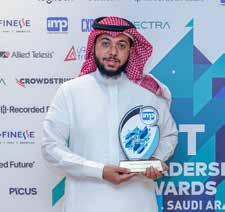


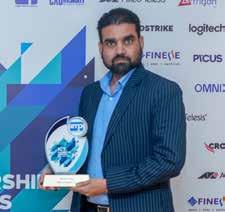

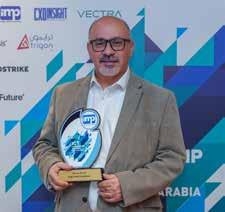
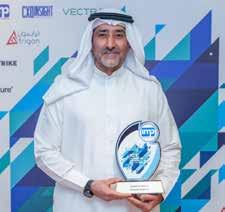

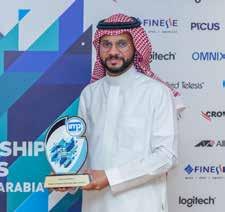


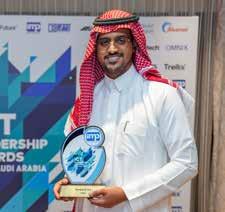
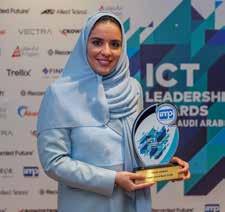




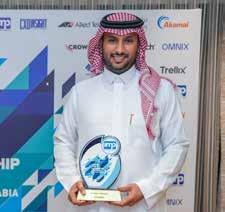
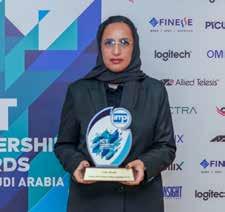
Technical & Vocational Training Corporation

Technical and Vocational Training Corporation (TVTC)

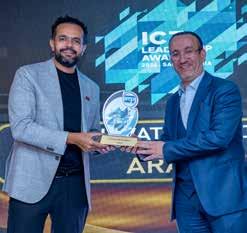
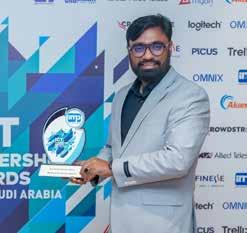
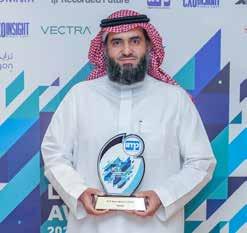
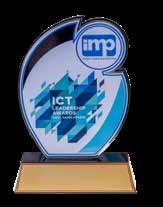
A Leader in the Gartner® Magic Quadrant™ for Application Security Testing for the 7th Year in a Row
Integrated SaaS AST Platform
Remove complexity, reduce cost, and improve scalability with an integrated SaaS AppSec solution
Application Security Posture Management (ASPM)
Scale testing, remediation, and risk management
Software Composition Analysis (SCA)
Secure and manage open source risks in applications and containers
Static Application Security Testing (SAST)
Address security and quality defects in code as it's being developed
Interactive Application Security Testing (IAST)
Automate web security testing within DevOps pipelines
Protocol Fuzzing
Identify defects and zero-day vulnerabilities in services and protocols
Dynamic Application Security Testing (DAST)
Verify the security of web applications in development and production www.blackduck.com
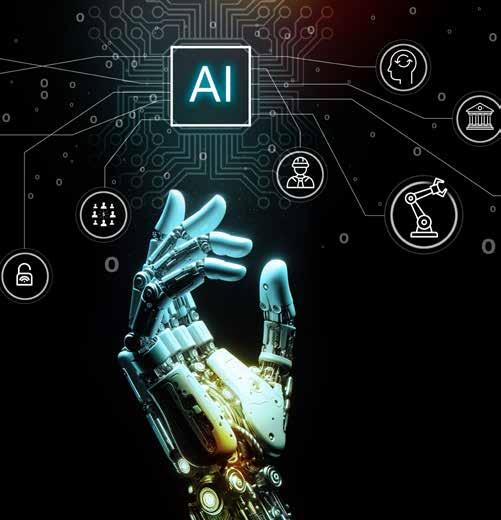

By Dr Stefan Leichenauer, VP of Engineering, SandboxAQ
The Middle East has emerged as a prominent player in the global AI landscape, driven by a mix of government and private investments in innovative technologies. By 2030, AI is expected to deliver over $320 billion in economic value, with
countries like the UAE and Saudi Arabia leading the way in AI-driven economic transformation. However, this rapid AI expansion brings a set of complex challenges. As organisations navigate the evolving AI environment, they must adopt future-oriented strategies to stay competitive.
While formulating these strategies, it’s important to recognise the key trends that will shape the future of AI in the Middle East through 2025 and beyond.
The future of AI extends beyond traditional language-based models (LLMs) and is now evolving toward autonomous agents capable of decision-making through environmental interactions. This agentic approach represents a new frontier, enabling systems that adapt to dynamic conditions — a significant advantage in sectors where conventional data analysis may fall short.
Large Quantitative Models (LQMs) are instrumental in this evolution, leveraging extensive quantitative data combined with physics-aware architectures. Unlike language models, which predominantly process text, LQMs are designed to address complex, data-intensive challenges in fields such as drug discovery, materials science, healthcare diagnostics, financial modelling, and industrial optimisation. The precision and data-driven insights provided by LQMs far exceed what typical AI tools can achieve. For regional companies operating in these sectors, adopting LQMs could facilitate breakthroughs, positioning the region as a leader in next-generation AI applications.
Verticals such as agriculture, construction, manufacturing, and supply chain management have historically been slower to embrace AI. But, as AI technologies advance, these industries are on the brink of transformative change. LQMs, with their robust capabilities, offer tailored solutions that surpass languagebased limitations by analysing quantitative data specific to each sector’s challenges.
As AI becomes more prominent in these industries, the demand for new roles that blend AI expertise
with sector-specific knowledge will grow. Professionals skilled in both AI and industry nuances will be essential to maximise the impact of these technologies. By cultivating a workforce that bridges AI capabilities with industry-specific expertise, organisations in the Middle East can seize a competitive advantage and drive AI-driven transformation in these traditionally slow-adopting sectors.
AI infrastructure becomes a competitive differentiator
As AI models scale up in size and complexity, dedicated infrastructure becomes crucial. The focus in AI is shifting from algorithmic advancements alone to the physical infrastructure that supports AI applications at scale. Custom-built data centres and high-performance hardware, paired with optimised energy management systems, are necessary to handle the computational demands of massive models.
In response, governments and organisations in the Middle East have begun investing in AIsupportive infrastructure. Initiatives like Dubai’s AI Lab and specialised AI data centres reflect a recognition that AI innovation hinges on a strong physical foundation. For organisations, these infrastructure investments are no longer just an option, but a requirement to sustain growth and drive innovation. Building robust infrastructure will enable Middle Eastern companies to handle the demands of complex AI applications and position the region as a leader in AI capabilities.
AI-driven productivity and the empowered workforce
AI’s value in the workplace extends far beyond simple automation. As companies strive to improve productivity and streamline operations, AI tools are becoming integral to daily workflows, empowering employees to make smarter and faster decisions. By prioritising AI training and developing accessible AI-driven
tools, organisations can enable employees at all levels to effectively leverage AI.
This approach not only boosts productivity but also democratises access to AI across the organisation. Collaborating with AI specialists to design user-friendly tools ensures that employees in diverse roles — from marketing and finance to HR and operations — can use AI to drive data-informed decisions and foster innovation within their departments. Developing an AIliterate workforce will be essential for Middle Eastern companies to remain competitive and establish a culture of continuous improvement.
While AI is advancing rapidly, the cost-efficiency of AI solutions remains a critical challenge. Many AI systems operate on tight margins, with significant investment required for data, energy, and computational resources in the pursuit of self-sustaining AI models. As the industry matures, companies may increasingly adopt smaller, task-focused models to reduce costs and improve returns on investment. Specialised models, in many cases, outperform broad, general-purpose models, offering efficient and targeted solutions.
For Middle Eastern businesses, focusing on application-specific, efficient models presents a strategic opportunity. By developing AI models tailored to the distinct needs of regional industries, organisations can achieve more impactful results while minimising resource demands. This approach offers a commercially viable pathway to deploying AI at scale, enhancing efficiency without excessive costs.
As AI becomes embedded in more sensitive aspects of business operations, data security will become increasingly paramount. Expanding AI usage requires
The future of AI extends beyond traditional LLMs and is now evolving toward autonomous agents capable of decision-making through environmental interactions
robust, secure solutions, which will drive demand for startups and consultancies specialising in AI security to help organisations safeguard against data breaches and comply with privacy regulations.
Prioritising stringent data security protocols is crucial not only for stakeholder confidence but also for meeting evolving regulatory standards. By embedding security into AI strategies, companies can protect valuable data assets while safely scaling their AI capabilities across various functions.
Focusing on data security will help organisations manage risks, ensuring trust and compliance as AI continues to reshape operations.
As the Middle East accelerates toward an AI-driven future, organisations have an unparalleled opportunity to shape the region’s AI landscape. Success in 2025 and beyond will depend on a balanced approach that fosters innovation while prioritising infrastructure, talent, security, and task-specific AI models. Companies must invest in scalable infrastructure to support advanced AI, cultivate AI expertise within their workforce, and keep data security at the forefront of their strategy. The time for action is now — organisations that prepare thoughtfully will be at the forefront of the next wave of AI-driven transformation.


By Lev Matveev, Founder, SearchInform
Employee idle time is a common challenge for employers, ranging from minor delays, like returning 15-30 minutes late from lunch, to serious cases of wasting half the workday on non-work activities. In one real case, a worker spent hours playing computer games, jeopardizing the company’s success.
A recent viral story highlighted a remote tech employee upset by their company’s return-to-office policy. They began “quiet quitting” (doing the bare minimum) and “quiet vacationing” (pretending to work while secretly taking time off). On a month-long trip to Italy, they used only one week of paid leave, faking productivity with
corporate chat activity, meeting participation, and a mouse jiggler. Despite their deception, they received good reviews.
Similar cases, though less extreme, are common, especially among remote workers. Such idleness has tangible consequences. Research from 2023 shows that an underperforming UAE employee, earning an average salary of AED 7,000, costs their company AED 2,625 monthly by wasting 1-3 hours daily on non-work activities. For 100 such employees, the loss exceeds AED 250,000 per month.
Beyond financial losses, reduced efficiency and demotivation among other employees amplify the problem. So, how can this issue be solved?
Nowadays, the tech market offers various solutions that help control

With its ability to protect data and monitor productivity, DLP is essential for maintaining both control and safety in the workplace
an employee uses a mouse jiggler, just like in the story mentioned, a time tracker will see them as “employee of the year.”
Employee monitoring systems (EMS) go beyond tracking time spent on tasks; they reveal what employees do during the workday. EMS monitors websites and applications used, identifying whether they’re actively engaged or if the resource is idle in the background—no fooling it with a mouse jiggler.
Advanced EMS categorises activity into three types: productive, nonproductive, and irrelevant to work. The latter includes tasks outside an employee’s role. For example, a procurement manager was caught using Photoshop excessively. TimeInformer revealed he was forging prices and stamps on proposals to benefit familiar providers.
EMS not only tracks performance but also helps detect and prevent fraud through timely action. However, it doesn’t secure a corporate network. For dual benefits—control and safety—consider a Data Loss Prevention (DLP) solution.
Additionally, DLP doubles as an EMS by providing detailed insights into worktime and resource efficiency. This dual functionality makes DLP a powerful tool for ensuring both work discipline and robust information security. With its ability to protect data and monitor productivity, DLP is essential for maintaining both control and safety in the workplace.
If you own a small business with limited resources but want to ensure employees’ timely arrivals and departures and track how long particular tasks take, then choose a time tracker.
If you are ready to pay a bit more to see the areas for efficiency improvement, consider implementing an EMS.
In case your company is mediumsized or larger and handles significant amounts of data, DLP is worth considering. In the long run, DLP will be a cost-effective solution, as it mitigates underperformance, prevents the loss of valuable information, and helps to avoid fines for data breaches.
employees’ work without disturbing or distracting them. Let’s break these tools down:
Time trackers: A starting point
Time tracking software is used to monitor time spent working on your PC, performing specific tasks, and idle time. Modern trackers usually “understand” how much time you spend on work tasks and how much time you spend idle based on keystrokes and cursor movements. That is, mouse wheel scrolling and keystrokes are enough for a time tracker to consider an employee working hard.
Time tracking software is a great help for HR and accountants as it assists them in processing payrolls, calculating off days, bonuses, etc. However, this tool has a significant drawback: it does not recognise productivity and is easily cheated. If
While EMS addresses certain security concerns, pairing it with a DLP ensures comprehensive protection, safeguarding sensitive data while monitoring productivity. This approach enhances both employee accountability and network security.
DLP secures all information transmission channels, preventing the leakage, exposure, or misuse of sensitive data. This is achieved through numerous pre-set and customisable policies that analyse file and document content. If deemed confidential, the system blocks any attempt to transmit it.
DLP ensures security by capturing everything sent via email, messaging platforms, or external devices, allowing quick identification of rule violations. It proves invaluable in internal investigations, revealing document forgery, moonlighting, misuse of corporate resources, kickbacks, and more.
However, it can also be that you own, for example, an architectural firm that handles sensitive information on a daily basis. In such a case, how can you protect your blueprints or knowhow here and now without facing a budget burden? Information security outsourcing may be the solution. Today, there are providers on the market offering managed security services (MSS) to protect valuable data with advanced tools, including DLP. With MSS, companies do not need to hire and maintain a dedicated information security specialist or invest in costly hardware. These services are typically cloudbased, reducing infrastructure costs. A reliable MSS provider assigns an analyst to monitor incidents and notify you of any significant activity. Additionally, managed security services are often available via subscription, which makes them accessible and affordable for organisations of any size and budget.
Moussalam Dalati, General Manager for MEA and France, Liferay, explores how low-code development, AI integration, and data-driven personalisation are reshaping digital experiences
Low-code development is clearly a focus for Liferay. How does it set you apart, and what makes it so valuable?
Low-code has been a significant focus for us, and it’s an area where we’re really setting ourselves apart. What makes our platform special is the way it bridges different needs. It allows users to create personalised experiences while also building business applications—all within the same ecosystem. This is a rare combination in the market.
Another big advantage is that it empowers both technical and non-technical users. Marketers, content editors, and business users can create and manage what they need independently of IT teams. At the same time, developers still have the flexibility to build more complex, bespoke solutions. By enabling both groups to work together seamlessly, we’re removing traditional bottlenecks and speeding up innovation.
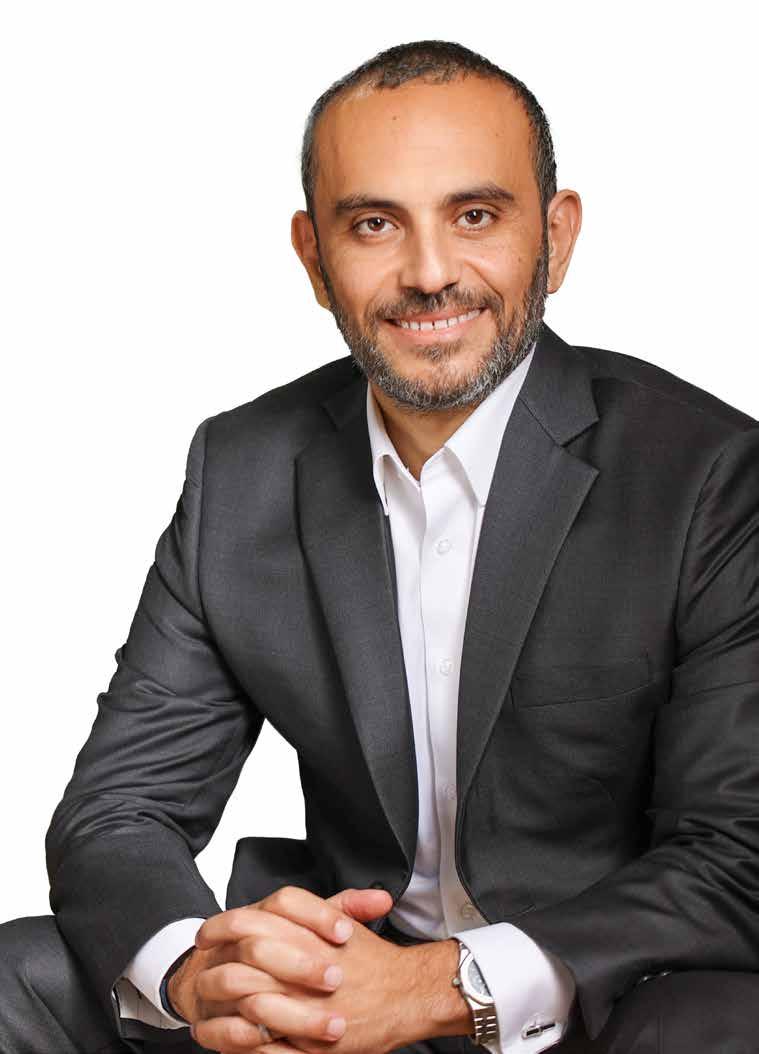
Our vision is to help organisations unlock the full potential of their data and create truly meaningful digital experiences
Beyond that, we’re using AI to optimise processes and boost productivity. For instance, our e-commerce engine—used by government entities and telecom operators—leverages AI to improve ROI through personalised recommendations, cross-selling, and upselling. These capabilities help organisations deliver tailored experiences to their customers while driving better business outcomes.
Personalisation has become a cornerstone of digital experiences. What strategies are proving most effective for delivering these tailored interactions?
AI is transforming how organisations operate. How is Liferay integrating AI into its platform, and what benefits does it bring to your clients?
AI is a key part of our platform, and we’re integrating it in a number of impactful ways. One example is helping marketers generate content faster. AI can quickly produce draft content, though, of course, human validation and editing remain essential to ensure quality.
The foundation of effective personalisation is data. Many organisations struggle to make full use of the data they have, so the first step is always to sanitise and segment that data. Once you have clean, organised data, you can start leveraging it to deliver meaningful experiences. Our platform combines behavioural data from various channels with internal organisational data to build a full profile of the user. This allows us to deliver highly personalised experiences. Another

important strategy is dynamic personalisation. This means the platform reacts in real-time, using data to adjust and optimise the user experience on the fly. For example, marketers can set multiple scenarios, and the system will automatically adapt based on the user’s behaviour and context. This approach has delivered fast and impactful results for our clients.
Data is undoubtedly powerful, but it also raises concerns about security and privacy. How does Liferay address these challenges and build trust with its customers?
Data security and privacy are absolutely critical, and we prioritise them in everything we do. Let me give you an example. One of our clients, the Statistics Centre of Abu Dhabi (SCAD), uses our platform for their portal, which is a vital resource for economic indicators and other data-driven insights.
The challenge was integrating data from multiple systems while ensuring it was securely managed and presented to the right stakeholders. Our platform enables this through robust permissioning and role-based access controls. This ensures that sensitive data is only accessible to authorised users. Whether it’s government-togovernment, business-to-business, or business-to-consumer data, we tailor the experience to different personas while maintaining strict data protection standards. If you visit SCAD’s website, you’ll see how this approach works in action.
What’s next for Liferay? What’s your vision moving forward?
Our vision is to help organisations unlock the full potential of their data and create truly meaningful digital experiences. Whether it’s through low-code development, AI-driven personalisation, or secure data management, we’re committed to delivering solutions that drive real results. Digital transformation is moving fast, and we’re excited to be at the forefront, enabling businesses to thrive in this new era.
Mahmoud El-Banna, Head of Enterprise Campus Edge Business – ME, Nokia, discusses the role of private wireless networks, edge computing, and AI in advancing industrial efficiency and sustainability in MEA
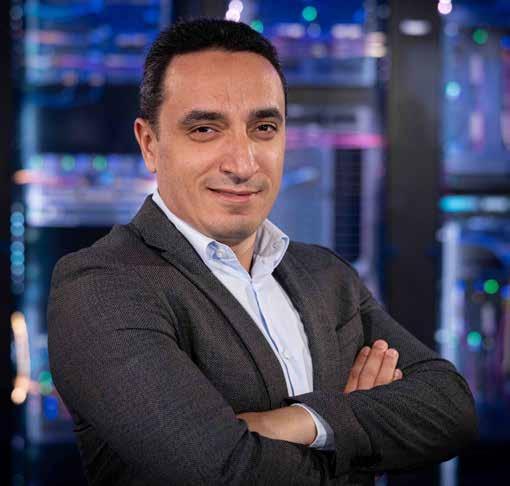
What drives industrial digitalisation today, and how do factors like security, safety, and sustainability shape enterprise transformation?
Industry 4.0 is playing a critical role in shaping the future of the different industries. Industries always strive to improve their business KPIs and digital transformation represents a key cornerstone to this improvement process.
Our recent 2024 Industrial Digitalisation report identified the main drivers for enterprise digital transformation: connectivity,
competitiveness, security, worker safety, and sustainability are the main drivers for digitalisation and the implementation of robust, reliable 4G/ LTE and 5G private wireless networks and mission-critical industrial edge.
What are the key findings from your Industrial Digitalisation report, and how do they align with MEA’s transformation goals?
In today’s volatile economic environment, where enterprises spending is coming under great scrutiny, private wireless networks and industrial edge are proving to benefit industries with an outstanding ROI.
Nokia 2024 Industrial Digitalisation report found that 93 percent of enterprises achieved ROI within 12 months, with 78 percent seeing positive outcomes within six months, and 23 percent in just one month.
Private wireless networks are so profitable that 100 percent of the enterprises interviewed in our 2024 Industrial Digitalisation report have expanded their use of private wireless networks, moving beyond proof of concept to wider deployment.
In MEA, we are seeing tremendous growth for the deployment of private wireless networks across all sectors. Oil & Gas sector, predominantly in the Middle East, strives for productivity gains where private wireless networks are a key supporting factor. The Mining industry similarly looks for accelerating their revenue streams and equally improve worker safety. The 2024 Industrial digitalisation report states that worker safety improved for 65 percent of respondents, with over a 10 percent enhancement through technologies such as geofencing and robotics.
Finally, port terminals, which are steel-heavy environments, are under tremendous pressure to improve their productivity by replacing the current legacy technologies to ensure better performance and immediate productivity gains. 79 percent of organisations reported a 10 percent or greater reduction in emissions, thanks to better connectivity and IoT integration provided by private wireless networks.
As private wireless networks continue to support a range of industrial use cases, what do you believe are the key technical and operational factors that differentiate high-performance solutions?
A number of critical technical and operational factors differentiate private
network solutions from other solutions in the market; super low latency in loaded conditions, deterministic performance, and pervasive coverage patterns. This, in return, offers clear operational gains to an array of industries adopting private wireless networks as their key connectivity solution.
How important is sustainability in the digital transformation of industries today?
Industry 4.0 digitalisation and high-performance connectivity are critical accelerators for more sustainable industrial operations. With considerable environmental footprints and the need for consistent, transparent reporting, industries are increasingly measuring and tracking the progress of their sustainability strategies. In support of industries’ sustainability goals, we have recently launched the Private Wireless Sustainability Calculator.
Our Private Wireless Sustainability Calculator quantifies the environmental and social benefits of private wireless networks, industrial edge and four critical Industry 4.0 use cases, such as environmental monitoring. It’s a powerful tool that
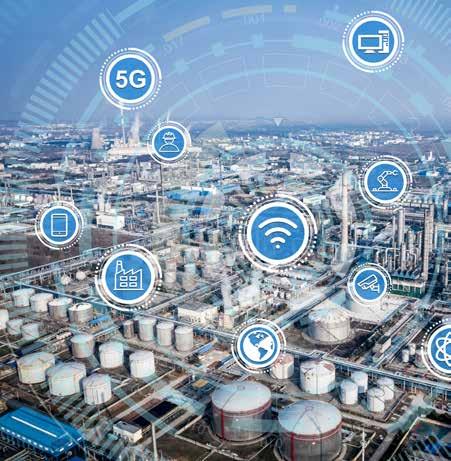
offers vital findings and insights to improve operational efficiencies, worker health and safety, and potential reductions in costs and environmental footprint. The calculator model uses data from multiple sources and is currently available for mining, chemical manufacturing and ports industries, with additional sectors being planned.
How are edge computing and real-time analytics transforming industrial operations, particularly when paired with emerging technologies like AI?
private wireless networks can support AI and advanced analytics to boost efficiency and productivity and unlock even more efficiencies. For example, the introduction of video analytics to a private wireless network alongside edge-compute resources enabled 75 percent of businesses to improve efficiency by 10 percent.
Edge technology is playing a foundational role in enabling new and more advanced lowlatency use cases that stretch beyond connectivity
Edge technology is playing a foundational role in enabling new and more advanced low-latency use cases that stretch beyond connectivity.
Our 2024 Industrial Digitalisation report showed that, 39 percent of the enterprises that deployed private wireless have since implemented an on-premise edge technology or a new selection of industrial devices to power digitalisation, with a further 52 percent planning to do so. When combined with other technologies like edge computing,
As part of our One Platform for Industrial Digitalisation, we offer private wireless, edge and an array of industrial devices and applications that enable enterprises to easily scale their digitalisation efforts. Our most recent expansion of devices portfolio includes new field routers to increase the data transfer capacity of Nokia MX Boost, which combines Wi-Fi and private wireless into a single connectivity system, Ex-protected tablet and a new EXprotected 5G PTT handheld by i.safe MOBILE. In addition, more Nokiaowned and best-in-class industry applications have been integrated into the Nokia MX Industrial Edge (MXIE) to drive efficiency, productivity and OT security.
We caught up with Saurabh Abhayankar, Chief Product Officer, MicroStrategy, to discuss the transformative impact of generative AI on analytics and business intelligence

How does MicroStrategy view the role of AI in analytics and business intelligence?
Our vision has always been to empower organisations with actionable insights, enabling them to operate more efficiently, serve customers better, and drive business outcomes. AI amplifies this vision by automating many of the processes involved in turning data into decisions. Tasks like data modelling,
dashboard creation, and report generation can now be streamlined, providing users with instant insights rather than waiting weeks for analysis. While this vision isn’t fully realised yet, we’re steadily moving towards a future where AI plays a central role in analytics.
Generative AI (GenAI) is making waves across industries. How is it impacting analytics and BI? GenAI is transformative because
it bridges the gap between technical complexity and human understanding. Unlike traditional AI, which required a strong analytical background to interpret, GenAI leverages natural language processing and cognitive skills to make data accessible to everyone. Users can now ask questions in plain language and receive tailored, actionable insights. Moreover, GenAI can automate workflows, interpret unstructured data, and provide

contextually rich answers, elevating the role of business intelligence in decision-making.
What challenges do organisations face when integrating GenAI into analytics?
One significant challenge is GenAI’s probabilistic nature, which can sometimes lead to inconsistent or inaccurate responses—commonly referred to as the “hallucination” problem. On the other hand, business intelligence systems are deterministic, offering reliable, repeatable results. By combining GenAI’s cognitive abilities with the structured rigour of BI, we mitigate these challenges. GenAI handles understanding and framing the question, while BI ensures accuracy in data processing and analysis. Another concern is data privacy. Many large language models operate in the cloud, and organisations are understandably cautious about sharing sensitive data. At MicroStrategy, we address this by minimising the data sent to LLMs, avoiding training them on customer data, and maintaining strict boundaries to protect privacy and ensure compliance.
There are also organisations in highly regulated industries, such as finance and healthcare, that remain apprehensive about implementing AI solutions due to stricter data usage guidelines. However, our approach—where customer data is kept separate from LLM training— has made our solutions viable for even the most sensitive sectors. This differentiation allows us to work with customers who may hesitate to adopt AI from providers with less stringent data privacy practices.
How does MicroStrategy differentiate its AI innovations from competitors?
delivers accurate, context-aware insights. Competitors often lack this robust foundation, making it difficult—if not impossible—to deliver reliable AI-driven analytics on structured data.
Looking ahead, what do you see as the next transformative technology in the analytics space?
I believe we’re moving towards a world of “agentic AI” or virtual employees. These AI agents will handle tasks autonomously— creating marketing campaigns, conducting revenue analyses, or even drafting business plans. Just as the Industrial Revolution amplified human productivity through machinery, these AI agents will significantly enhance our capacity to accomplish complex tasks. While this might take five years to fully materialise, it’s a natural progression of AI’s evolution.
How does MicroStrategy see itself fitting into this AI-driven future?
While many AI systems excel with unstructured data—such as generating creative content—they often struggle with structured data critical for tasks like customer segmentation and personalised messaging. This is where MicroStrategy’s strength lies. We envision a future where AI agents rely on MicroStrategy to process structured data effectively. For instance, an agent could use MicroStrategy to identify the most promising customers for a new product and then generate personalised campaigns based on that analysis. By seamlessly integrating structured and unstructured data, we aim to be a cornerstone of this next wave of AI innovation.
AI is no longer just a tool; it’s becoming an indispensable partner in decision-making and productivity
Our semantic layer is a standout feature. This data modelling layer simplifies complex databases and presents them to business users in a governed, secure, and scalable way. It ensures that calculations, metrics, and definitions are consistent and specific to each organisation. When AI is applied on top of this layer, it
AI is no longer just a tool; it’s becoming an indispensable partner in decision-making and productivity. At MicroStrategy, we’re committed to leveraging AI responsibly and innovatively to unlock the full potential of analytics. The future is incredibly exciting, and we’re proud to help shape it.

ABy Jim Chappell, Global Head of AI, AVEVA
rtificial intelligence (AI) is often pitched as a cureall boost for businesses.
But the reality is more nuanced. AI is not just one thing, and its many aptitudes are being developed over time in stages.
The term AI covers a wide base of technologies, including many types of machine learning such as predictive analytics, deep learning, reinforcement learning, and more recently, generative AI (genAI) with the massive new Large Language Models (LLMs).
I believe that AI technologies, once fully realised, will be more life-changing than the internet and have a profound effect on the way we run and maximise businesses. Plant systems will be transformed from start to finish. AI-based solutions could automatically optimise, strategise and execute operations – 24/7.
This reality is on its way but it is not here yet. In today’s world, we are seeing decades of AI research and testing come to the fore, combined with the humanisation of AI through LLMs.
In this respect, AI-powered solutions are already driving already huge wins across industries. These technologies are enabling organisations to reduce fuel
consumption, improve carbon capture, lower emissions, maximise equipment lifecycles. They are boosting corporate sustainability while increasing efficiency and profits.
How are they doing this?
AI-driven software helps industrial businesses engineer faster through suggestive design and simulation; operate at optimal production levels for maximum efficiency; provide decision support to connected workers; reduce waste for maximum yield; and recognise potential equipment failures before they can occur. Companies around the world are already realising massive sustainability and productivity benefits through applied industrial AI. For example, US power giant Duke Energy saved over $250 million by installing predictive models which provided early detection of issues, reduced errors, enabled faster results and boosted ROI. Or take Schneider Electric, which was able to prevent three full factory outages by predicting issues in advance.
Infusing AI through the network
People often think of AI through a GenAI lens. However, GenAI is only

one type of AI, along with many others, and the truth is many of these building blocks of AI have been in play for decades. However, as available data increases, the true value of AI is being realised. The new LLMs with GenAI are no exception.
Today’s experts are in the process of honing these mathematical algorithms and connecting the different strands of knowledge to provide the solution, or part of the solution, for industrial businesses.
I call it AI infusion. It’s a process of diffusing AI capabilities across the board in areas such as engineering design, simulation, operations, maintenance, value chain, and data. With the availability of the massive LLMs, we will begin to see a leap in operational effectiveness –when all relevant data, no matter how obscure, is made accessible and intuitive to the user. Through the humanisation of AI, users will get more value out of their data and eventually out of everything they do, including software functionality. It will likely become the new user experience for computers.
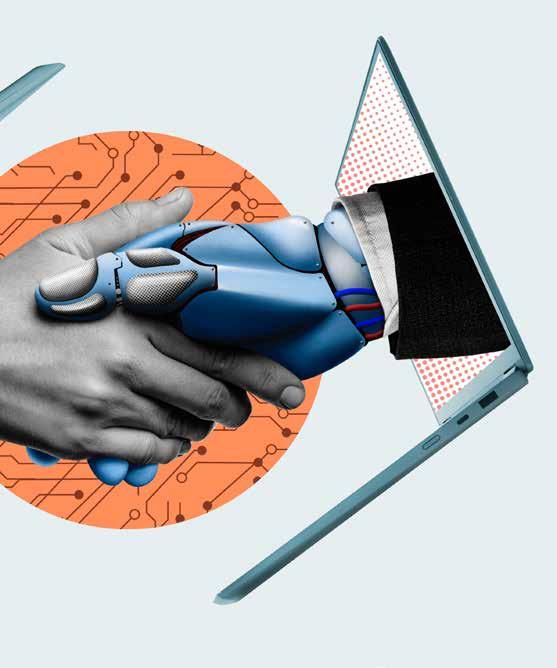
AI is not a replacement for human intellect, rather it should be viewed as an enabling partner
The next leap forward will come through integrating multiple types of AI and applications, so that workers can do their jobs to maximum capacity. Evolving technologies will see humans and AI technologies working together for maximum progress.
This development can already be seen in action in the form of digital twins – virtual representations
of physical objects, systems or factories that are created through data gathered from Internet of Things (IoT) devices, advanced computer systems and digital processes.
AI is the brain behind the digital twin. Once a digital twin has been put into motion, AI can generate customised data analysis to support enhanced operations.
And by layering LLMs on top of the network, AI technology can become even more of a contemporary or assistant than a mere tool.
For example, by leveraging their company’s industrial data and a LLM, the user could ask natural language questions of the system with minimal setup required. The user might ask objective-driven questions, like ‘Which windfarm has the lowest energy output this
week?’ or ‘Why is my compressor performing worse now than last week?”
By synthesising GenAI and other types of AI with LLMs, users can access applied knowledge in fields that might be out of their ken, such as 3D design drawings and maintenance manuals. The LLM can extract the relevant information and use it to find issues and help solve problems – all from a prompt-based question from a human.
Eventually this means that workers and executives will do their jobs with maximum effectivity and ease, while operations run at optimal and sustainable levels.
In other words, this is what industry 5.0 will look like. AIbased solutions will run hybrid semantic searches, constantly scoring and finding relationships among different types of data. This information will be the key to solving organisational challenges on a massive scale.
As you can see, we are rapidly moving from narrow AI toward general AI where software will become much more human-like in capability. As the trend continues, AI will become more objective-driven, leveraging everything at its disposal to achieve its goal.
However, AI is not a replacement for human intellect, rather it should be viewed as an enabling partner. It is destined to progress from today’s software that assists humans, to software that works alongside humans – workers who are deeply connected to the technologies through easy-to-use interfaces.
One day, in the not-too-distant future, a plant manager might ask “Can you lower my factory’s carbon footprint? I give you permission to do anything you need to do that’s ethical and legal to lower my carbon footprint”. This command could then set off a chain of events including sending emails, looking at set points, checking assets for efficiency problems, making control system changes, and issuing new work orders if needed.
We’re not there yet. But we have most of the pieces, so watch this space.


By Debanjali Ghosh, Technical Evangelist, ManageEngine
In a world increasingly defined by digital interactions, the way we manage and protect our identities is under intense scrutiny. Traditional digital identity systems, despite their widespread use, are fraught with challenges that pose significant risks to both individuals and organisations. Centralised data storage, reliance on third-party verification, and the escalating costs and complexities of compliance are just a few of the issues that plague legacy identity systems. As these problems become more pronounced, the concept of blockchain identity has emerged as a compelling alternative—one that promises to fundamentally transform the way we think about and manage digital identities.
Current digital identity systems rely on centralised architectures, where a single authority manages user data. While this model has supported the growth of online services and simplified access through federated identity management, it poses significant challenges.
Centralised systems are inherently vulnerable to cyber-attacks, as they consolidate user data in one location. High-profile breaches, like the Equifax incident, have exposed millions of users’ personal information, underscoring the risks of centralised data storage.
Compliance processes, such as Know Your Customer (KYC) and Anti-Money Laundering (AML), are vital for regulated industries but often
The fusion of blockchain and cybersecurity, coupled with advances in decentralised technology, will pave the way for a new era of digital identity
inefficient and costly. Repeated identity verification across platforms increases expenses and creates unnecessary friction for users.
Moreover, centralised systems strip users of control over their data. Every account creation or information exchange effectively surrenders ownership, leaving individuals unable to influence how their data is stored, shared, or monetised. This lack of control raises serious privacy concerns, as users remain powerless to prevent unauthorised access or misuse of their personal information.
Self-sovereign identity transforms digital autonomy
Imagine a shared digital notebook where everyone has the same, up-todate record—this is how blockchain ensures secure, transparent transactions. Now, consider your personal identity, like a driver’s license or school ID. These are often managed by institutions, leaving you with little control over how your data is used. For example, logging into a website with your email gives the site access to it.
Self-Sovereign Identity (SSI) changes this by using blockchain to give individuals control. With SSI, your personal data resides in a secure digital wallet, and you decide what to share and with whom. This approach ensures privacy, security, and ownership of your digital identity.
Blockchain’s decentralised nature eliminates single points of failure, making stored data immutable and reducing fraud risks. SSI also
streamlines processes like KYC, cutting time and costs while meeting compliance needs. For industries with strict regulations, SSI offers a faster, more efficient way to verify identities while safeguarding privacy.
Harnessing blockchain for identity management
The potential of SSI is not just theoretical; it is already being realised in various real-world applications. Bhutan, for example, has implemented a National Digital Identity (NDI) system based on SSI principles as part of its Digital Drukyul Flagship Program. This system allows individuals to control their personal data and digital identities while facilitating secure digital interactions between the government, citisens, and private sector entities. By issuing verifiable credentials (VCs) through decentralised identifiers (DIDs), Bhutan’s system exemplifies how SSI can enhance national digital identity frameworks.
Similarly, the Farmsent project uses blockchain to simplify digital identities for farmers, enabling them to access capital and engage in secure transactions. By leveraging non-fungible tokens (NFTs) to represent bids in farm product auctions, Farmsent ensures the authenticity of transactions and enhances the credibility of both buyers and sellers. This innovative use of blockchain demonstrates how SSI can empower underserved communities and streamline industry-specific processes.
These examples illustrate the broad applicability of SSI across different sectors, from government services to agriculture, highlighting the potential of blockchain to drive more secure, efficient, and inclusive digital identity solutions.
Navigating the ethical hurdles of blockchain identity
Despite its promise, the adoption of blockchain-based identity management is not without challenges. Scalability remains a major concern, as blockchain networks must handle an increasing volume of transactions without
compromising performance. Regulatory hurdles also pose barriers to widespread adoption, particularly in regions with stringent data protection laws. Moreover, the complexity of blockchain technology can be a deterrent for users unfamiliar with its principles, necessitating the development of user-friendly interfaces and robust educational initiatives.
However, as the technology matures, these challenges are likely to be overcome. The fusion of blockchain and cybersecurity, coupled with advances in decentralised technology, will pave the way for a new era of digital identity—one that prioritises user sovereignty, data integrity, and security.
As we stand at the cusp of a digital revolution, the adoption of self-sovereign identity represents a critical step towards a more secure, efficient, and equitable future. Whether through national initiatives like Bhutan’s NDI project or industry-specific solutions like Farmsent, SSI offers a powerful alternative to the centralised identity systems of the past. By embracing blockchain technology, we can create a world where individuals have true ownership of their digital identities, where privacy is respected, and where trust is built into the very fabric of our online interactions.
The journey towards self-sovereign identity is not just a technological shift; it is a fundamental rethinking of how we define and protect our digital selves in the 21st century. In a world where our online presence defines much of our lives, the way we manage and protect digital identities is evolving rapidly. The future of digital identity isn’t just a matter of convenience and security, it’s about fostering trust, privacy, and fairness in the digital age. As we embrace new technologies, we must also commit to an ethical framework that respects individual rights and empowers users, shaping a future where digital identity is both advanced and principled.

By Wojciech Bajda, Managing Director, Public Sector, MENAT, AWS
In an increasingly digital world, educational organisations are facing more sophisticated cybersecurity threats, and these institutions must rely on collecting and maintaining sensitive data to effectively carry out their core missions. Safeguarding this data must remain a top priority, especially as schools continue to digitally transform to bring new innovation and capabilities to their students, educators, and sponsors. Known ransomware attacks increased by 68 percent in 2023, a study by MalwareBytes found in its annual 2024 State of Malware Report, and last year there was a 70 percent increase in the education sector, making 2023 “the worst ransomware year on record for education.”
“Cybersecurity as a core competency” was again selected as the top priority by in the EduCause Top-10 List, which identifies the most critical issues affecting colleges and universities each year. It is imperative that education organisations have robust cybersecurity measures in place to help mitigate cyber threats. Below are five top tips for all education organisations to follow in enhancing their day-to-day cybersecurity:
• Create a documented security policy – To help ensure all employees are on the same page and have a clear reference point for any queries, the best starting point for education organisations is to draw up a simple cybersecurity policy. This should clearly outline the expectations and duty of all employees to adhere to the collective standards required to enhance cybersecurity. The policy should be clearly communicated throughout an organisation and made easily accessible across internal systems. The policy should include the following four tips as actions for all employees.
• Require unique credentials for all login requirements –This is something we all take for granted in our personal lives but is imperative in keeping potential bad actors at bay, particularly when dealing with sensitive or confidential data. Employees must be required to use unique credentials for all work-related login functions with set rules that help ensure that passwords are strong, both in length and complexity. This means bad actors cannot unlock multiple doors

across an organisation through accessing one set of credentials.
• Tighten admin rights, permissions, and privileges – It is obviously important to have the necessary IT system rights in place for your employees to work effectively. Organisations must remember, however, that granting many rights or privileges to many employees increases cybersecurity risk. Best practice is to ensure that all employees only receive privileges that are necessary for their business role. To start, organisations should audit existing privileges, establish a system for documenting any new permissions, and perform regular access reviews. Educational institutions

can use cloud services such as IAM and Cognito to easily manage and monitor access rights.
• Foster a blame-free culture – Underpinning all these recommendations is culture. An organisation’s cybersecurity culture must be driven by inclusion and safe space, avoiding any blame on the part of employees when things go wrong. Phishtesting and more traditional security training methods are increasingly outdated, ineffective, and potentially problematic for employee relations and morale. Organisations should concentrate on driving greater awareness and improving behavioural training to encourage positive changes among their employee base and to help enhance collective cybersecurity.
Strong cybersecurity is no longer a “nice to have” for education organisations. Learning is increasingly taking place online, with technology facilitating communications and interaction between educators and students. This is opening the door for bad actors. In January 2023, for example, confidential data from 14 schools in the UK was leaked online after the organisations refused to meet hackers’ ransom demands following attacks that occurred during 2022. The leaked information included children’s SEN information, pupil passport scans, staff pay scales, and contract details.
An organisation’s cybersecurity culture must be driven by inclusion and safe space, avoiding any blame on the part of employees when things go wrong
• Back up your systems on the cloud – Using a cloud backup is a crucial step towards making sure data across an organisation is secured, recoverable, and easily accessible should bad actors compromise locally-held information. Cloud backups provide greater resiliency, so that that data cannot be deleted easily by bad actors.
AWS Backup provides cloud-native back up services for education organisations’ key data stores, such as buckets, volumes, databases, and file systems, across AWS services. A cloud backup is a necessity for all education organisations.
Organisations can help mitigate many of these risks by following the five guiding principles above. Putting these into action, in combination with strong leadership buy-in for cybersecurity investment and a wellunderstood, widely adopted “security culture” among employees will help any educational institution enhance its cybersecurity capabilities against future threats.
“If you really want to drive change, look to your leadership. Cybersecurity isn’t just about technology: it starts at the top,” says Orlando Scott-Cowley, public sector tech and business development manager at AWS. “Leadership must own and foster a culture which supports cybersecurity.

Sonos has introduced the Sonos Arc Ultra, a premium soundbar with Sound Motion technology, a new transducer innovation that reduces size while enhancing bass performance. The soundbar features 9.1.4 spatial audio powered by 14 custom-engineered drivers, including a Sound Motion woofer and tweeters with waveguides. It supports Dolby Atmos ® for an immersive soundstage and includes Trueplay tuning for optimised sound based on room acoustics, available for both iOS and Android users.
The Arc Ultra incorporates a redesigned centre channel architecture for improved vocal clarity,
Apple has launched its latest iMac, now powered by the M4 chip, offering notable improvements in performance and functionality. The iMac maintains its 24-inch 4.5K Retina display, with an optional nanotexture glass for reduced glare. It is available in seven colorus: green, yellow, orange, pink, purple, blue, and silver.
The device is equipped with the M4 chip, providing up to 1.7 times faster performance for everyday tasks and 2.1 times faster speeds for intensive applications compared to the M1 iMac. It includes a 12MP Centre Stage camera with Desk View support, a threemicrophone array, and a six-speaker system for improved audio and video quality.
Connectivity features include up to four Thunderbolt 4 ports, Wi-Fi 6E, and Bluetooth 5.3. The new iMac comes standard with 16GB of unified memory, configurable up to 32GB.
alongside an Advanced Speech Enhancement feature for customisable dialogue levels. It connects easily via HDMI eARC and offers multiple control options, including the Sonos app, Amazon Alexa, and Sonos Voice Control. The soundbar also includes Bluetooth line-in for additional streaming options.
In terms of sustainability, the Arc Ultra features 20 percent lower idle power consumption, uses recyclable packaging, and is designed for easier serviceability with fewer adhesives and more screws.


The Acer Nitro Intel Arc B-Series graphics cards, tailored for gamers and creators seeking high-performance hardware. The series includes two models: the Nitro Intel Arc B570 OC 10GB and the Nitro Intel Arc B580 OC 12GB. Both cards feature Intel’s Xe2 microarchitecture, offering up to 20 cores for enhanced gaming and content creation capabilities.
The B570 OC reaches clock speeds of up to 2,690 MHz, while the B580 OC achieves up to 2,740 MHz. They support up
to 12GB of GDDR6 memory and are optimized for 1440p high-FPS gaming, with the ability to handle up to 8K visuals. Built-in DirectX 12 Ultimate features include ray tracing, mesh shading, and variable rate shading.
The cards are equipped with FrostBlade cooling systems, featuring textured blades and dual-ball bearings for improved airflow and reduced noise.
Connectivity includes HDMI 2.1, three DisplayPort 2.1 ports, and PCIe 4.0 compatibility.

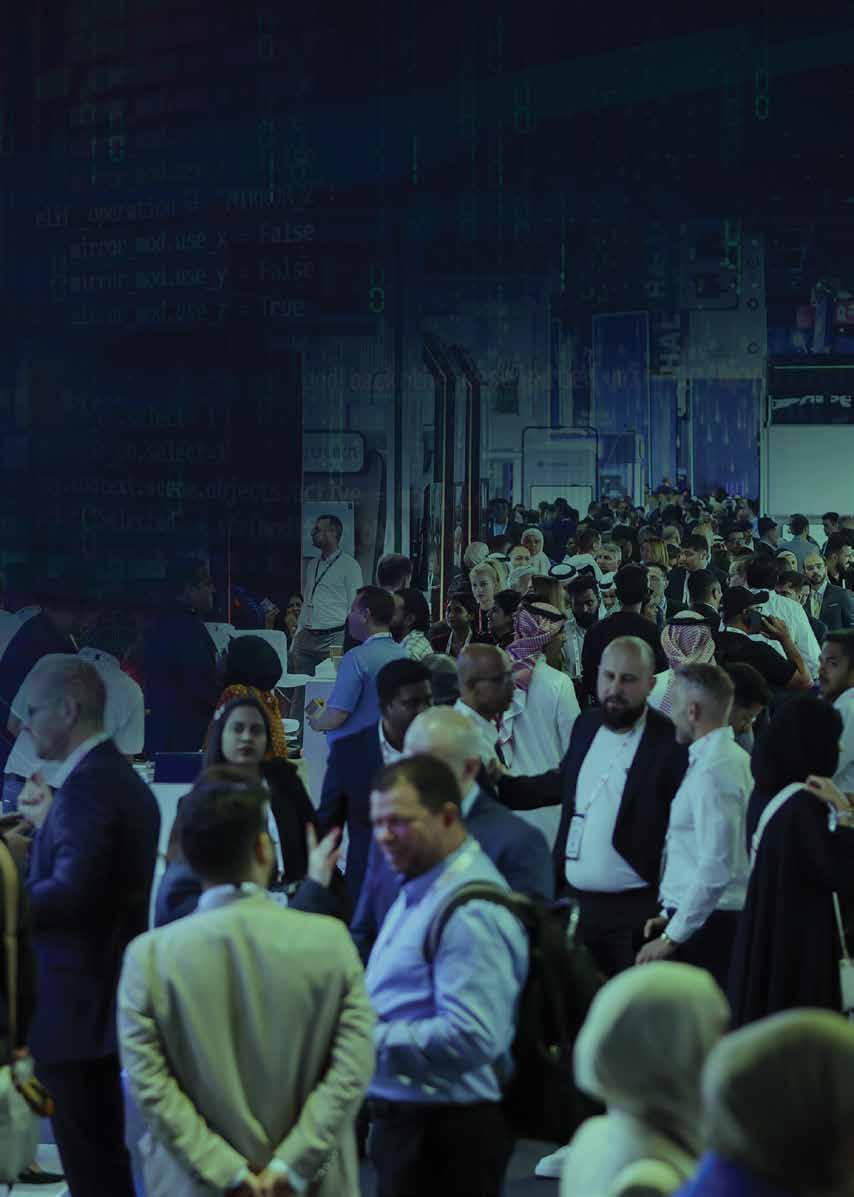






TSunil Paul, MD, Finesse, examines how Generative AI (GenAI) is reshaping cybersecurity, providing smarter solutions to protect sensitive data in an evolving threat landscape
he saying “data is the new oil” feels almost like a cliché, but—it’s spot on. Data powers businesses, drives decisions, and shapes our digital lives. But here’s the catch: with every gigabyte of data generated, the risks skyrocket. Whether it’s personal data, intellectual property, or financial records, securing this information is paramount as cyber threats grow more sophisticated.
The global cybercrime expected to cost the world $10.5 trillion annually by 2025, according to Cybersecurity Ventures. In this high-stakes game, securing sensitive information has never been more critical. Amid this landscape, Generative AI (GenAI) has emerged as a double-edged sword—offering revolutionary capabilities to secure data while introducing unique risks that must be addressed responsibly.
As data becomes the most valuable asset, it also becomes the most targeted. Cyber-attacks, data breaches, and privacy violations have surged, with organisations across industries scrambling to fortify their defences. According to IBM’s 2023 Data Breach Report, the average cost of a data
breach now sits at $4.45 million globally. Add to that the skyrocketing volume of data organisations handle daily—from employee credentials to customer financials—and the threat landscape becomes more complex than ever. Traditional security methods often fall short in identifying complex patterns or addressing zero-day vulnerabilities.
GenAI brings significant opportunities for innovation, but it also poses unique cybersecurity challenges for organisations to secure and manage interactions between GenAI applications and enterprise users, systems, and data.
How
Enterprises are deploying a large number of GenAI applications. These applications are accessing hundreds — if not thousands — of users, systems and data stores. These GenAI applications bring new risks, such as:
1. Leaking data by providing answers that exceed access rights and labels.
2. Violating privacy, AI, and industry regulations.
3. Bypassing business rules—both internal policies and contractual promises.
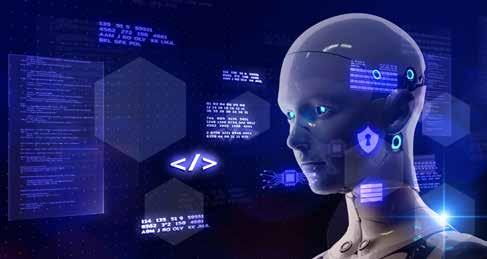
4. Exposing systems to cyber threats from both AI-driven and traditional attack methods.
This highlights the need for a new approach to cyber defence. Organisations can mitigate the challenges posed by GenAI by:
1. Identifying critical data elements and applying privacy segmentation.
2. Implementing robust monitoring for AI-generated content.
3. Developing AI models with secure and ethical design principles.
4. Regularly auditing datasets to prevent data poisoning.
5. Combining AI with human oversight for decision-making.
6. Adopting zero-trust principles and advanced threat detection solutions.
7. Implementing GenAI security products and solutions, including:
• Model security
• GenAI application security
• Prompt gateways/LLM firewalls
• GenAI governance frameworks
• GenAI brokers.
By combining tailored strategies with cutting-edge tools, Finesse and our partner Ackuity offer solutions like role-based access controls, real-time monitoring, and data tokenisation to help organisations securely implement Gen AI. Together, these capabilities create an integrated defence system that safeguards sensitive information while optimising efficiency.
While GenAI offers immense promise, it’s not without ethical and operational risks. Its ability to generate realistic phishing content, for instance, could be weaponised. Additionally, improperly managed AI systems may expose sensitive data during training or deployment phases.
For business leaders, embracing Gen AI is no longer optional—it’s essential. But the real challenge lies in adopting it responsibly, balancing innovation with ethical accountability.
The solution? Responsible AI governance. Organisations must establish strict policies, ensure transparency, and continuously audit their AI systems for compliance.
By prioritising security and building trust, businesses can stay resilient in a digitalfirst future where sensitive information remains their most critical resource.

